 |
||
|
HOME
|
US Navy -
ships
|
US Navy - air
units
|
USMC - air
units
|
International
Navies
|
Weapon Systems
|
Special Reports |
||
|
US Navy - Aircraft Carrier LPH 11 - USS New Orleans |
||
|
||
| 10/23 | ||
|
Type, class: Amphibious Assault Ship, Landing
Platform Helicopter - LPH / Iwo Jima class Builder: Philadelphia Naval Shipyard, Pennsylvania, USA STATUS: Ordered: December 18, 1964 Laid down: March 1, 1966 Launched: February 3, 1968 Commissioned: November 16, 1968 Decommissioned: October 31, 1997 Fate: sunk as a target, off Hawaii, on July 10, 2010 Namesake: Battle of New Orleans (1815) Ships Motto: THE ENFORCERS Technical Data: see: INFO > Iwo Jima class Amphibious Assault Ship - LPH |
||
|
Deployments: July 1972 - May 1973 with 31st Marine Amphibious Unit (MAU) and HMM-165(C) embarked - Pacific Ocean, Vietnam War April 1977 - December 1977 with 1st Marine Brigade and HMM-165(C) embarked - Pacific Ocean May 1980 - November 1980 with 17th Marine Amphibious Unit (MAU) and HMM-262(C) embarked - Pacific Ocean, Arabian Gulf May 1984 - December 1984 with 31st Marine Amphibious Unit (MAU) and HMM-165(C) embarked - Pacific Ocean, Indian Ocean January 1986 - September 1986 with 11th Marine Amphibious Unit (MAU) and HMM-268(C) embarked - Pacific Ocean June 1988 - December 1988 with 15th Marine Expeditionary Unit - SOC (MEU/SOC) and HMM-268(REIN) embarked - Pacific Ocean December 1990 - August 1991 with 11th Marine Expeditionary Unit - SOC (MEU/SOC) and HMM-268(REIN) embarked - Desert Shield/Storm - Persian Gulf September 1993 - March 1994 with 13th Marine Expeditionary Unit - SOC (MEU/SOC) and HMM-268(REIN) embarked - Pacific + Indian Ocean, off Somalia June 1995 - December 1995 with 11th Marine Expeditionary Unit - SOC (MEU/SOC) and HMM-164(REIN) embarked - Pacific Ocean, Persian Gulf January 1997 - May 1997 - Pacific Ocean |
||
| images | ||
 SINKEX during Exercise RIMPAC 2010 - off Hawaii - July 10, 2010 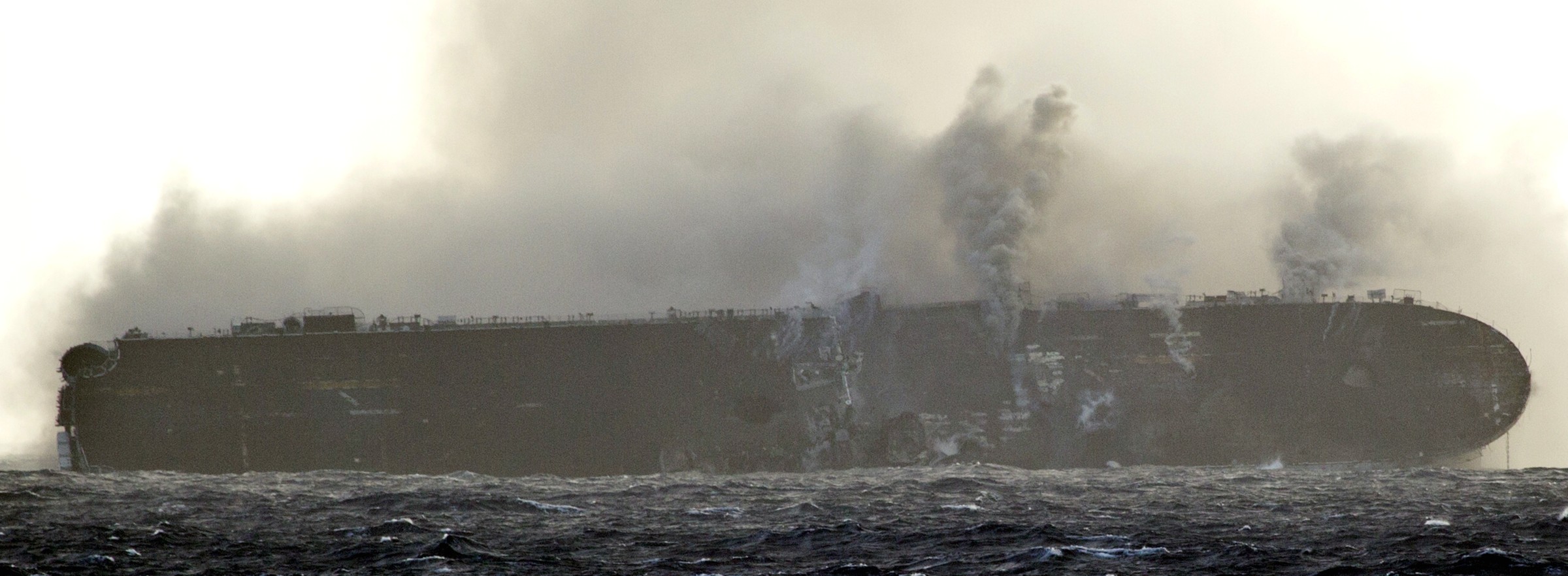 SINKEX during Exercise RIMPAC 2010 - off Hawaii - July 10, 2010 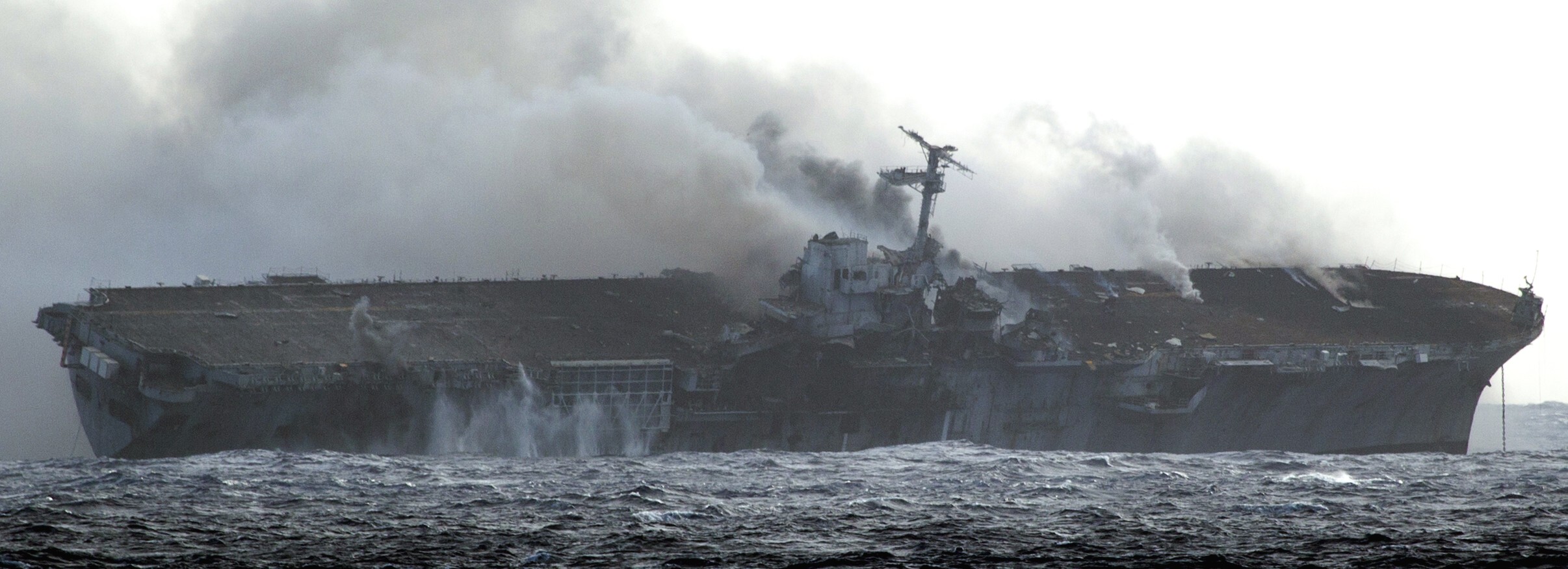 SINKEX during Exercise RIMPAC 2010 - off Hawaii - July 10, 2010 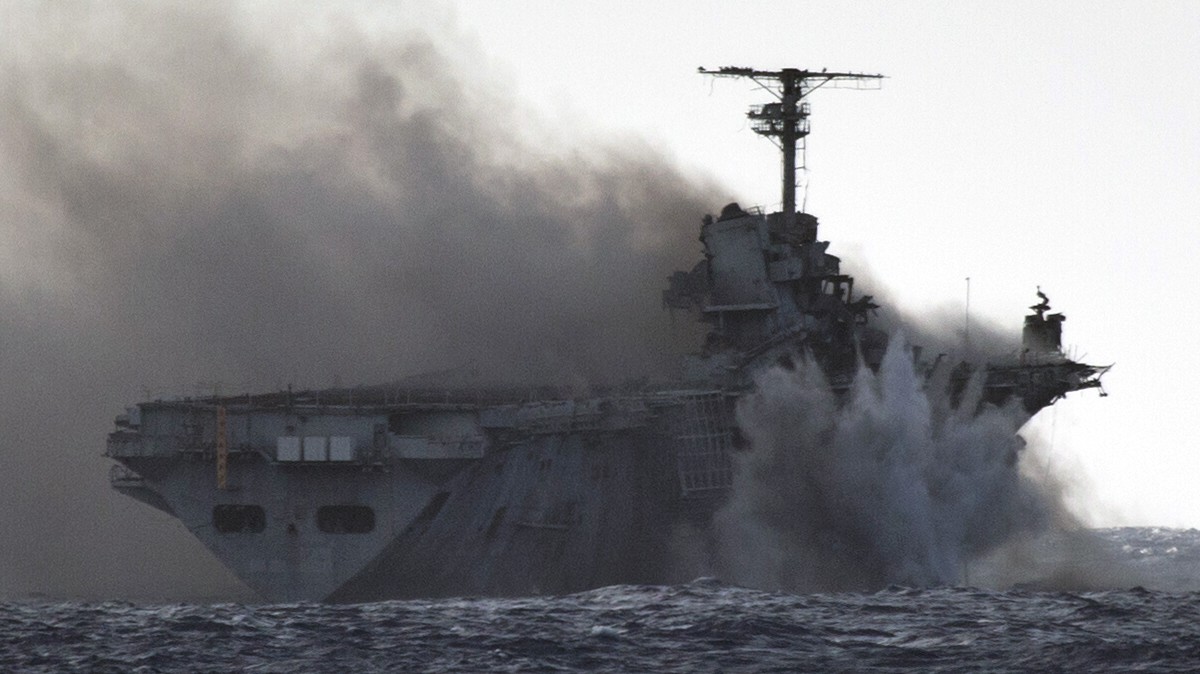 SINKEX during Exercise RIMPAC 2010 - off Hawaii - July 10, 2010 decommissioned on October 31, 1997 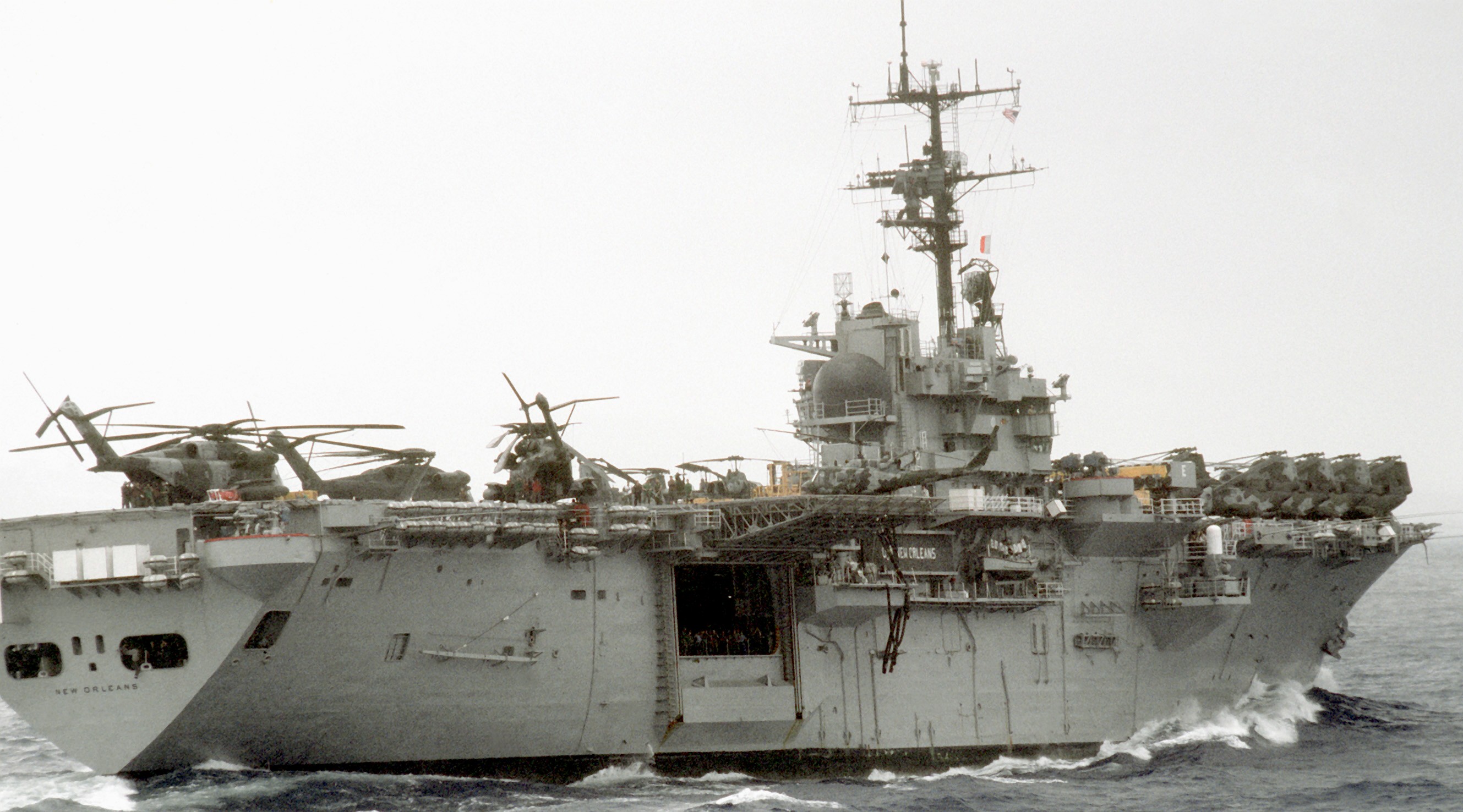 Gulf of Oman - 1990's 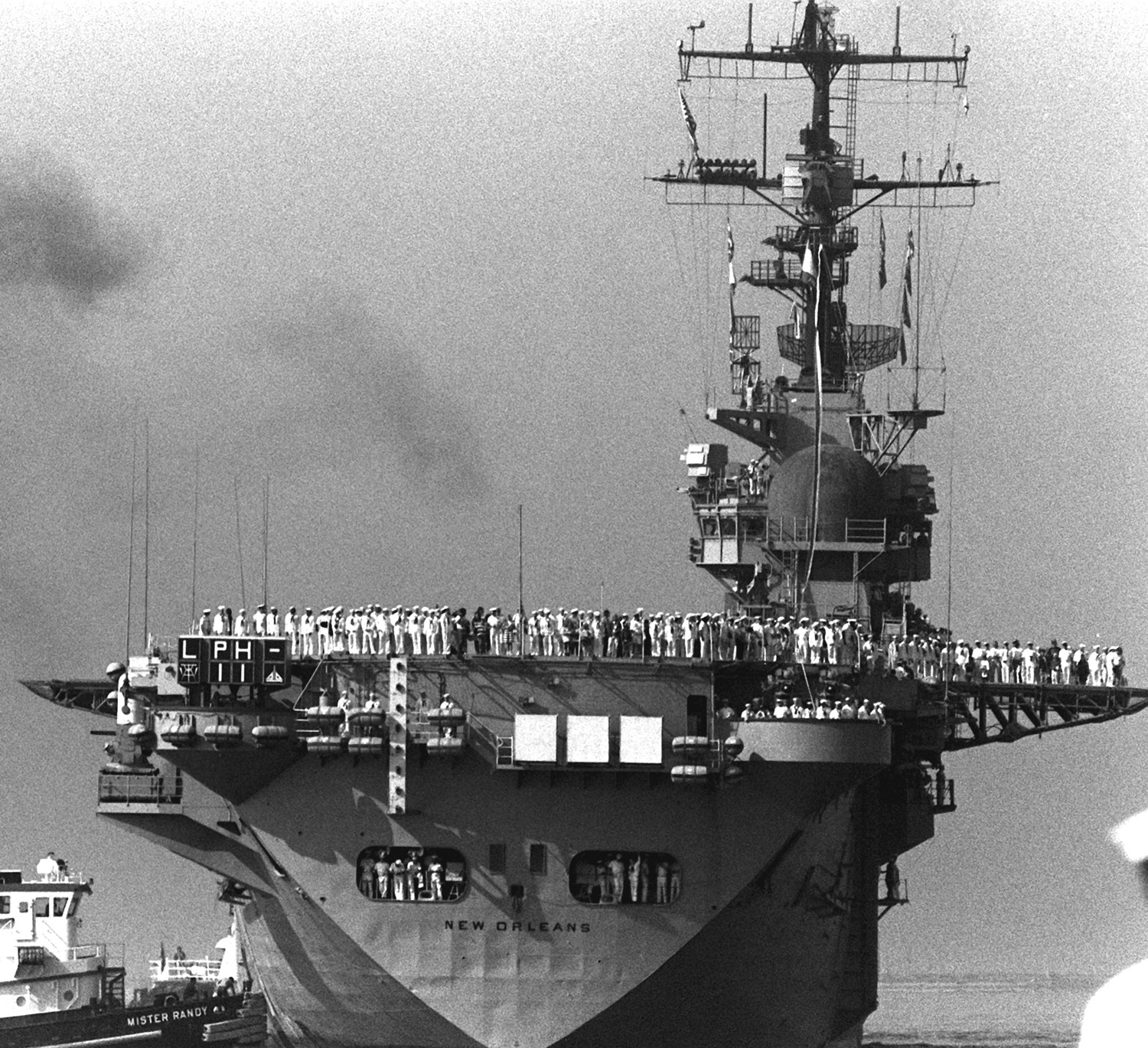 returning to San Diego, California - August 28, 1991 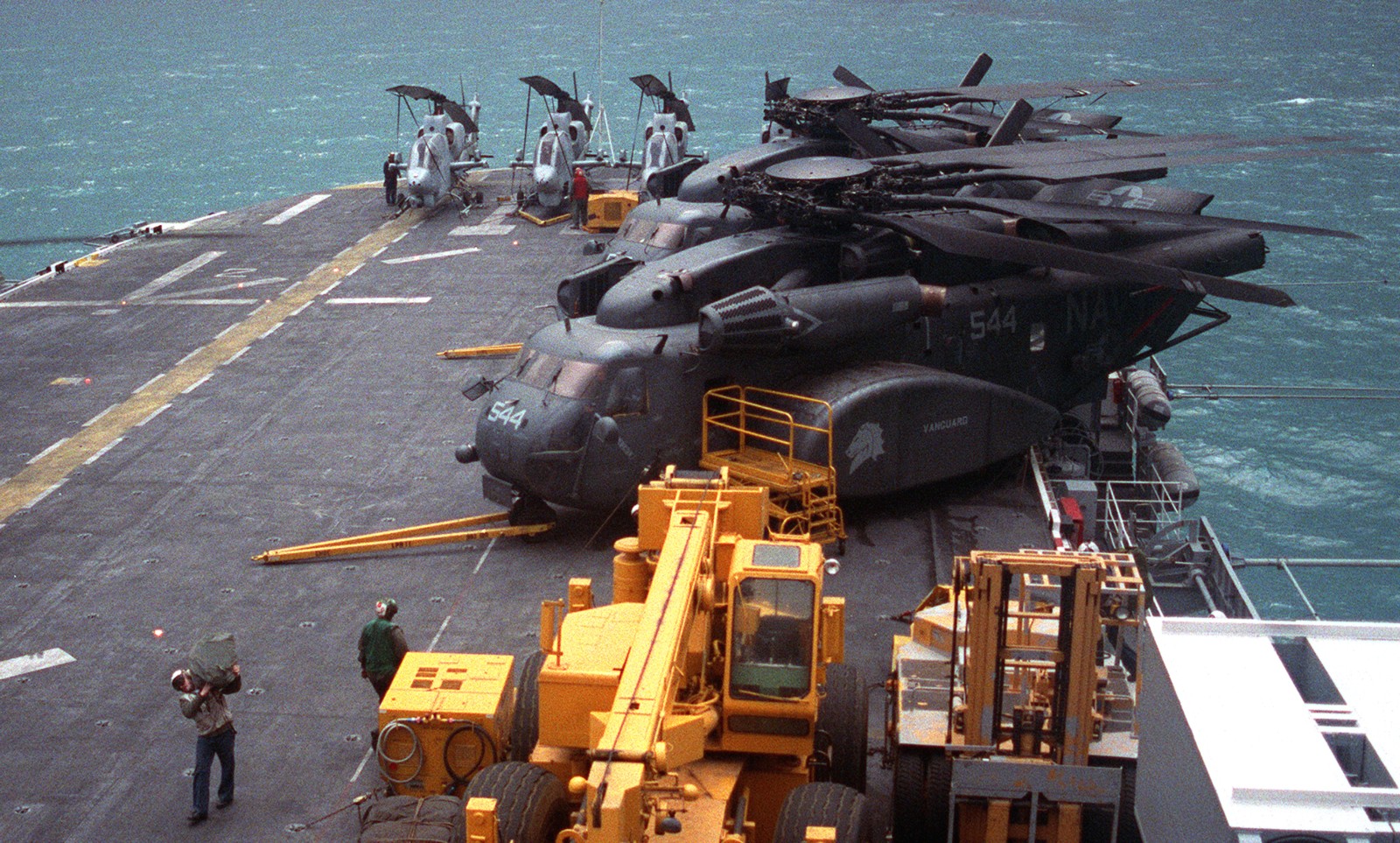 with HMM-268(C) embarked - Operation Desert Shield/Storm - March 1991 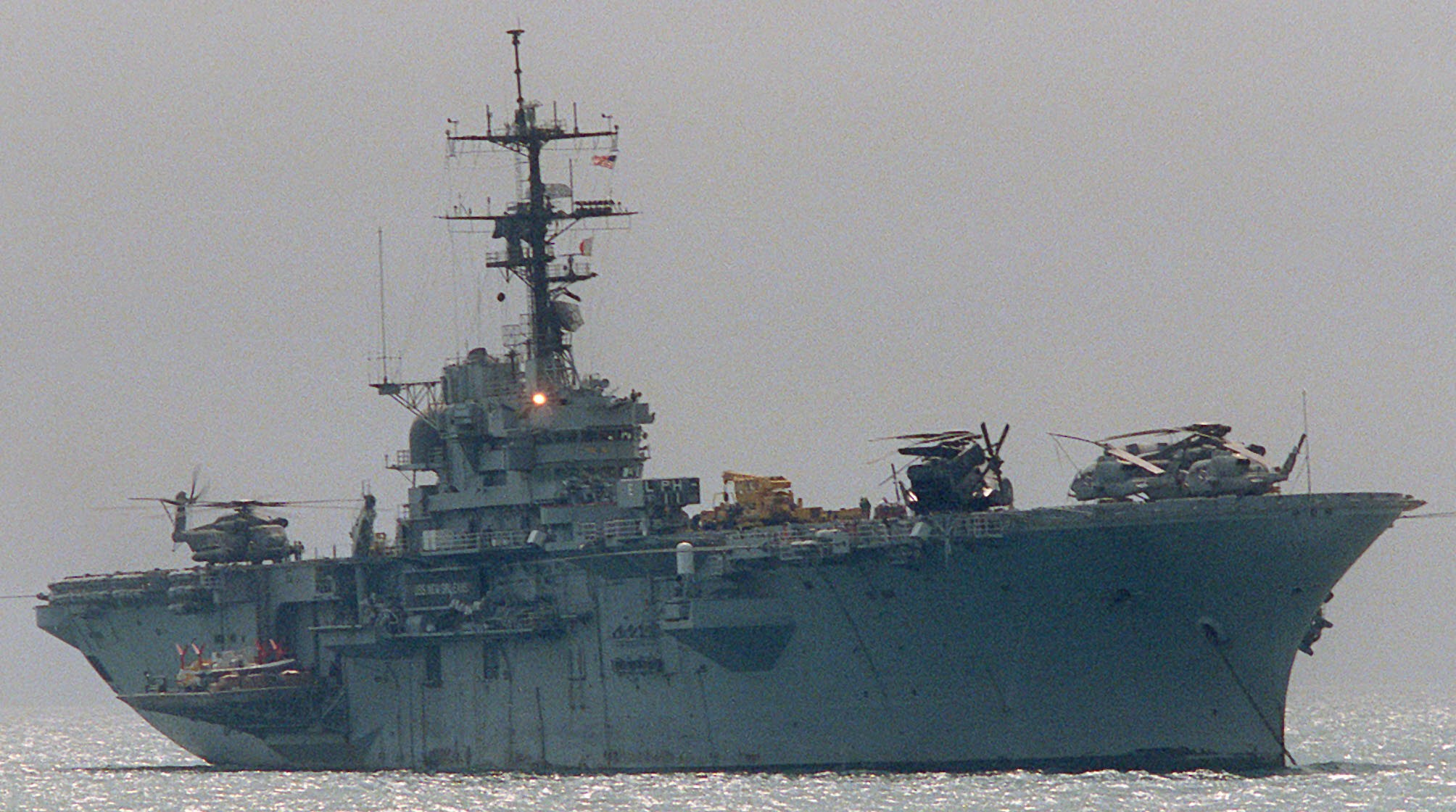 with HMM-268(C) embarked - Operation Desert Shield/Storm - February 1991 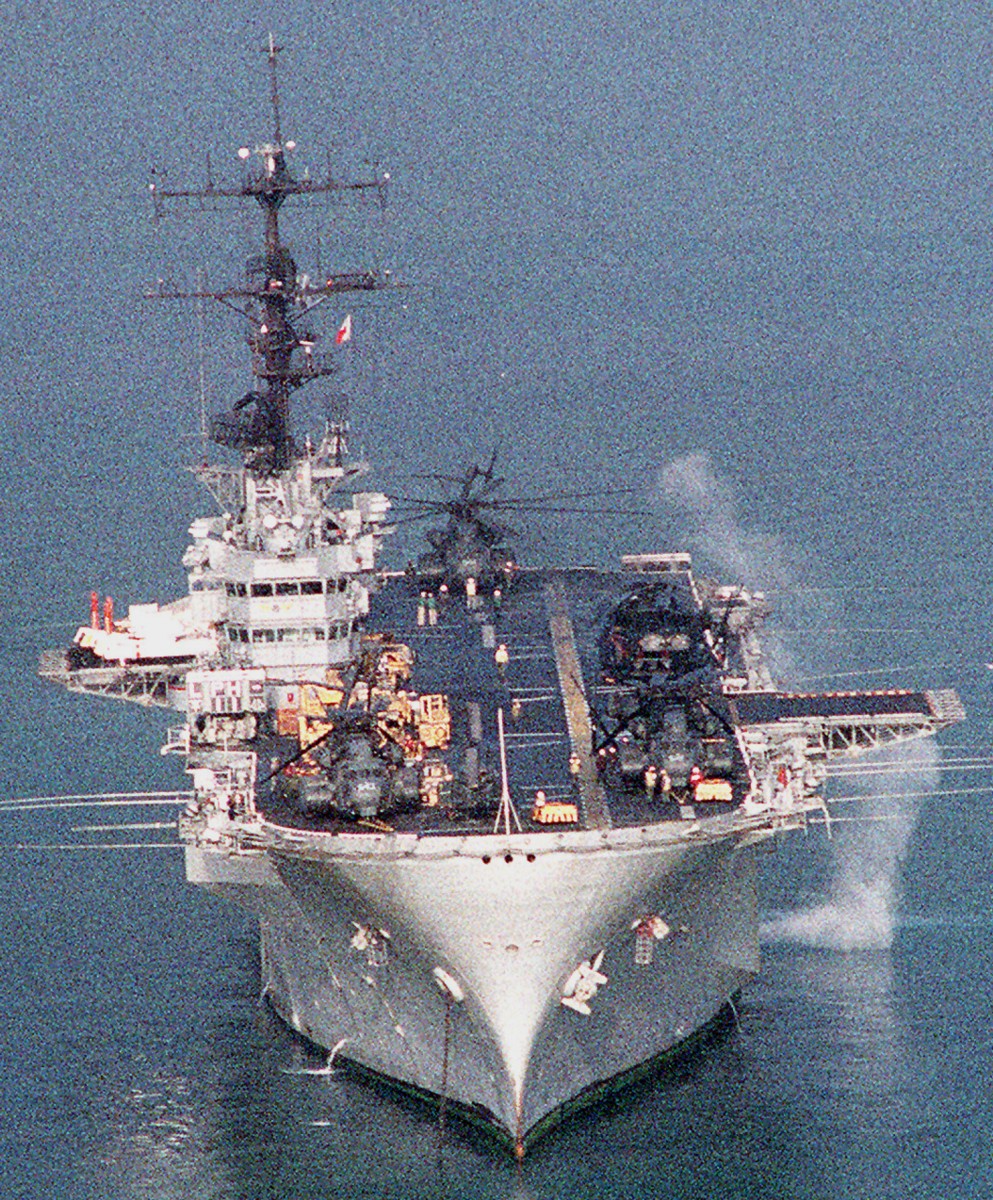 Operation Desert Storm - 1991 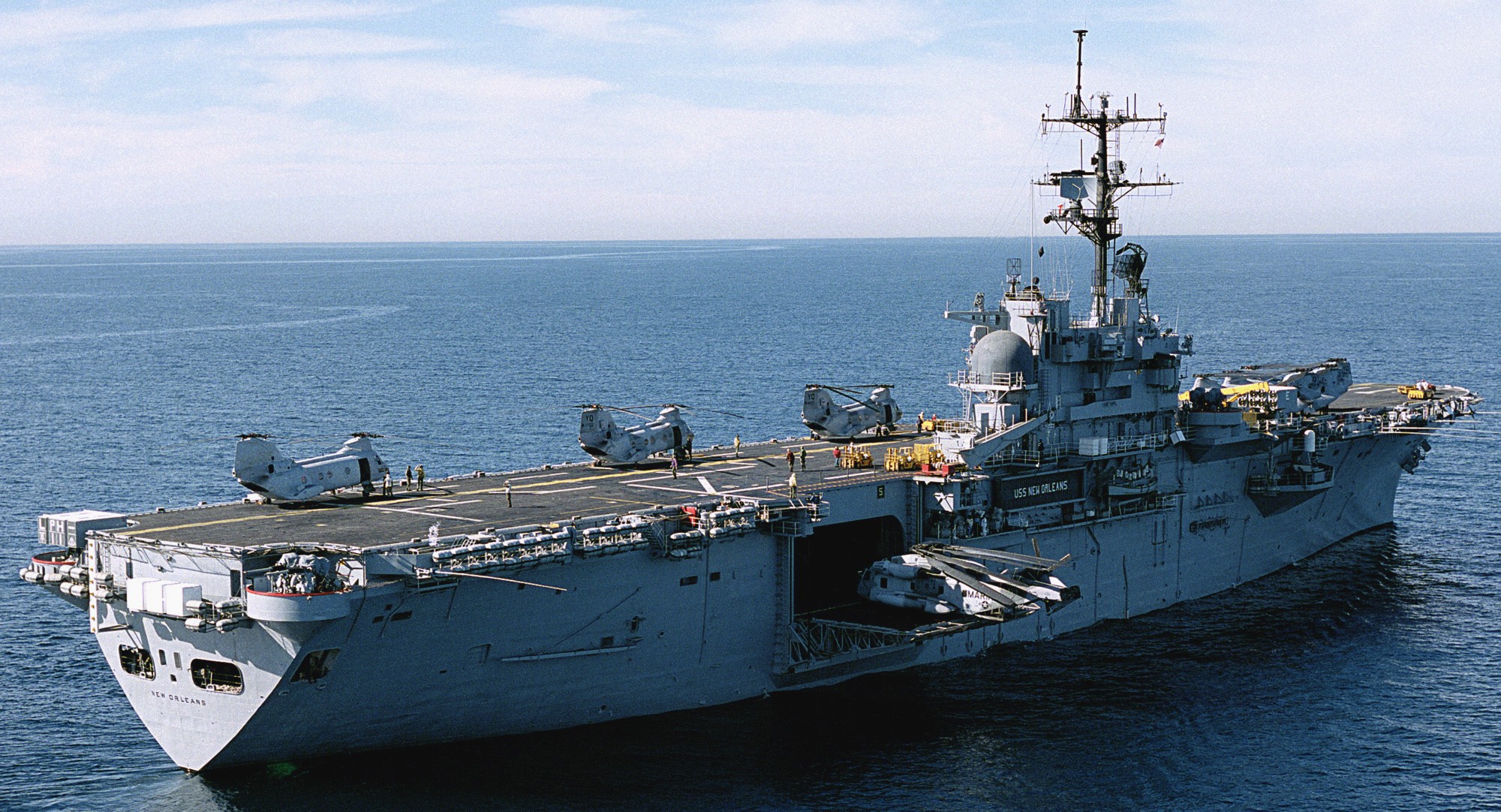 with HMM-268(C) embarked - Pacific Ocean - November 1990 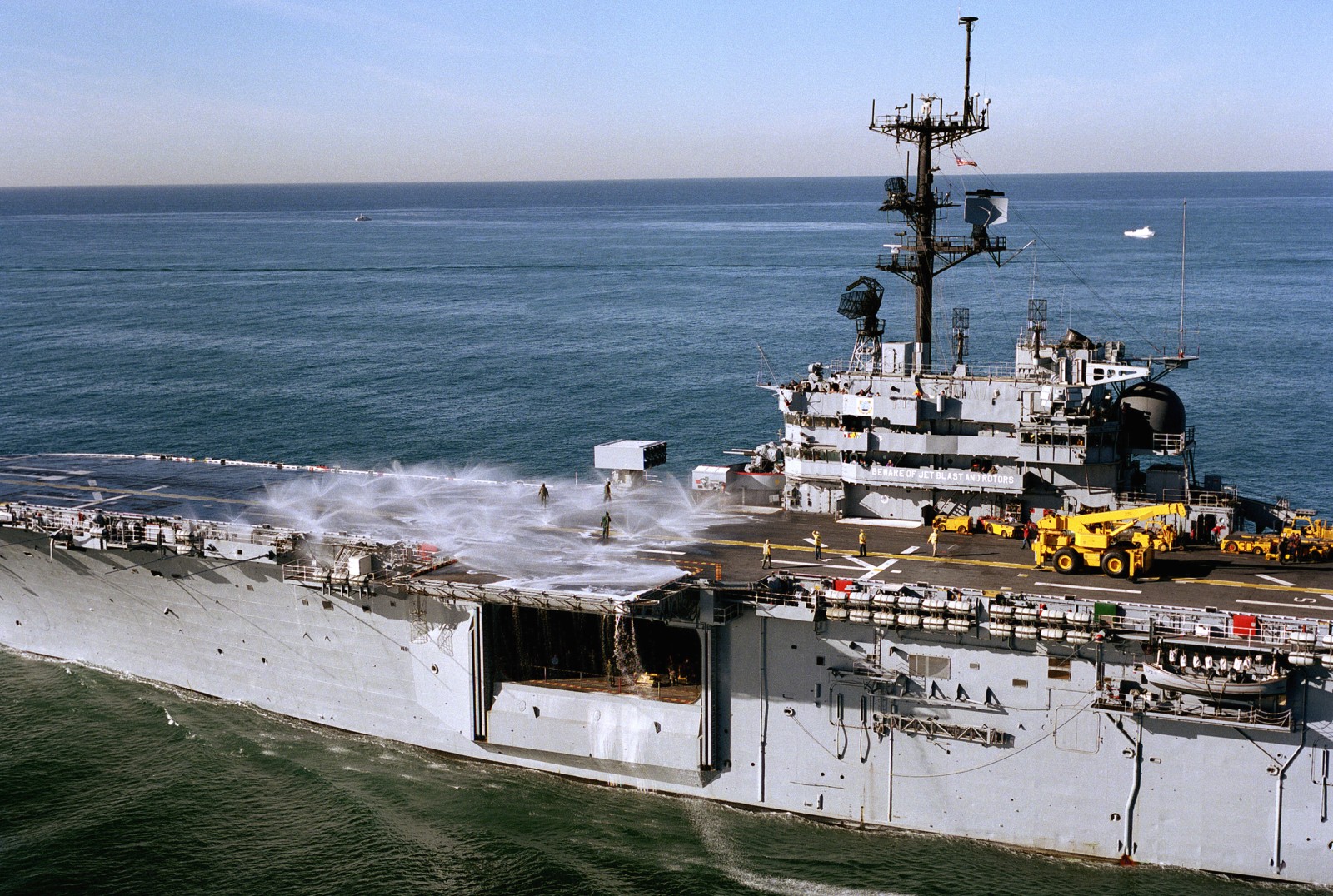 off California - November 1990 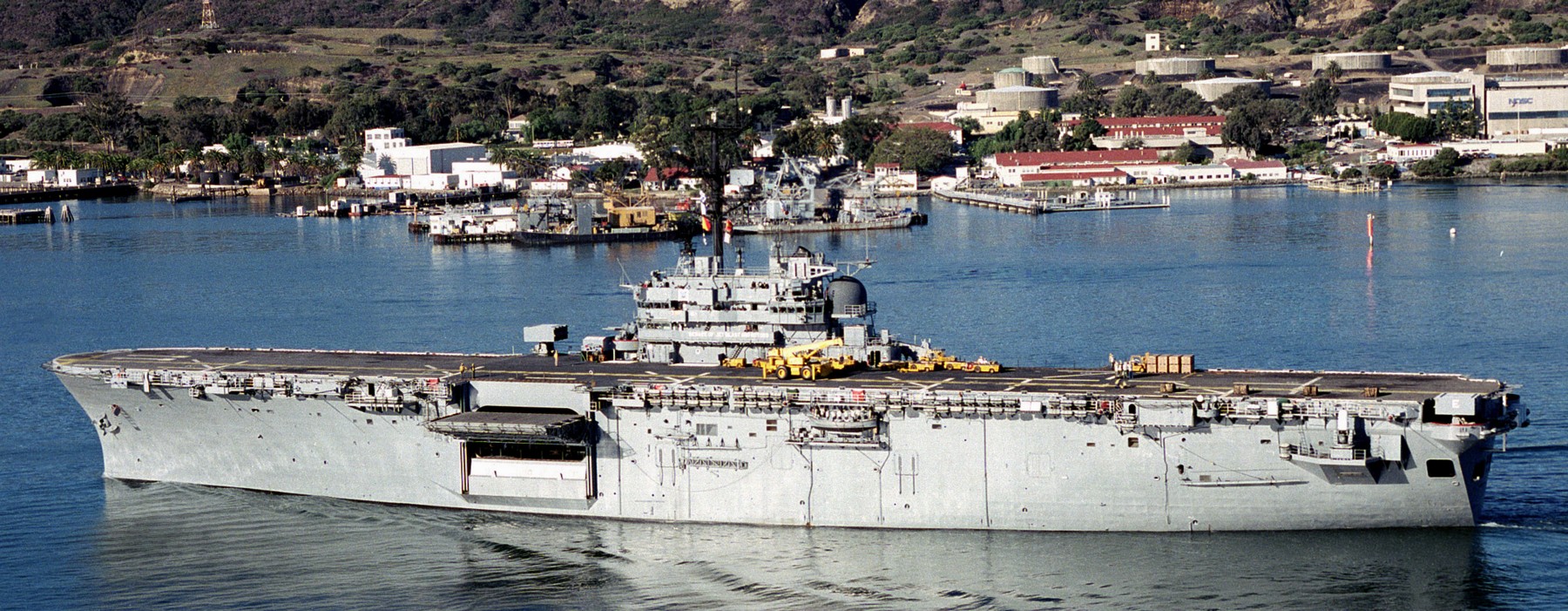 San Diego Bay - November 1990 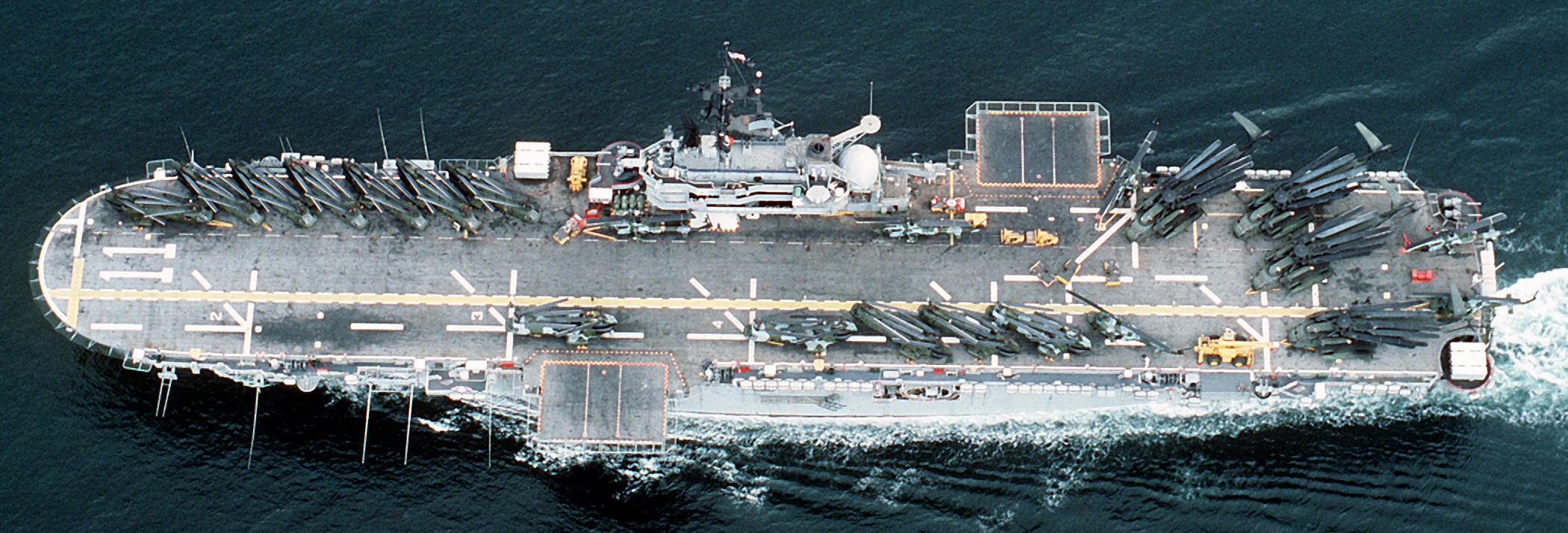 with HMM-268(C) embarked - Pacific Ocean - June 1988 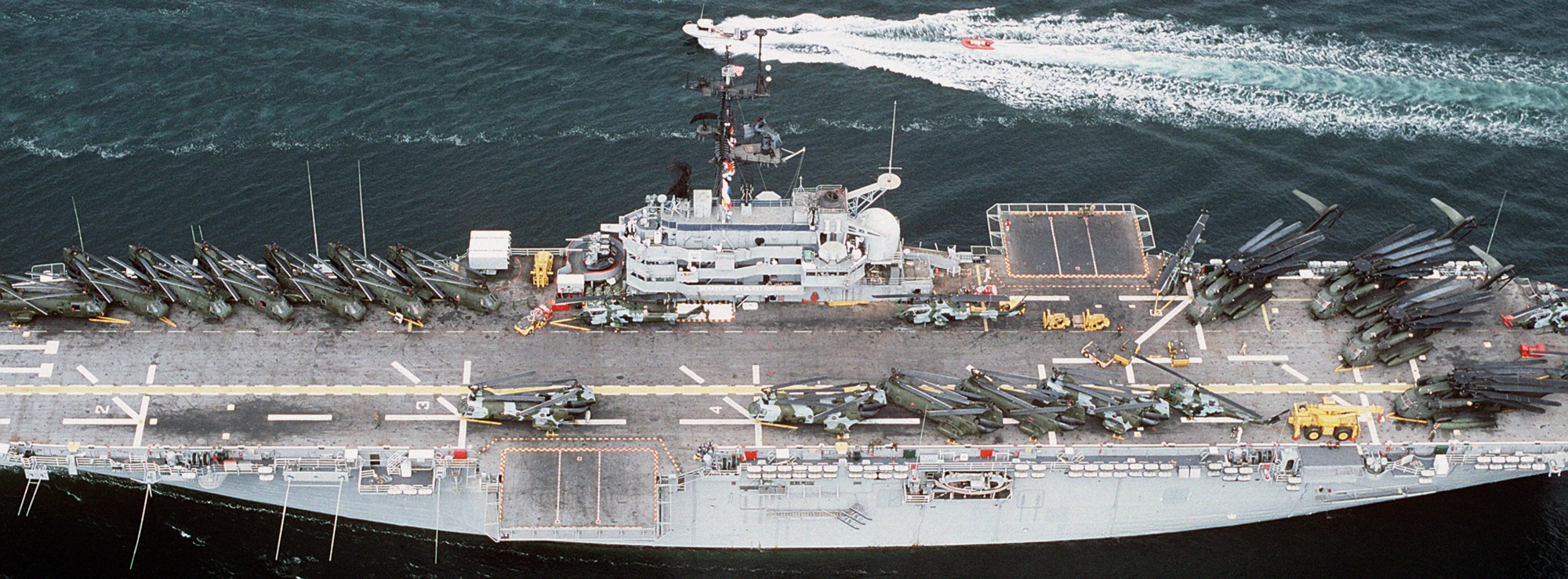 with HMM-268(C) embarked - Pacific Ocean - June 1988 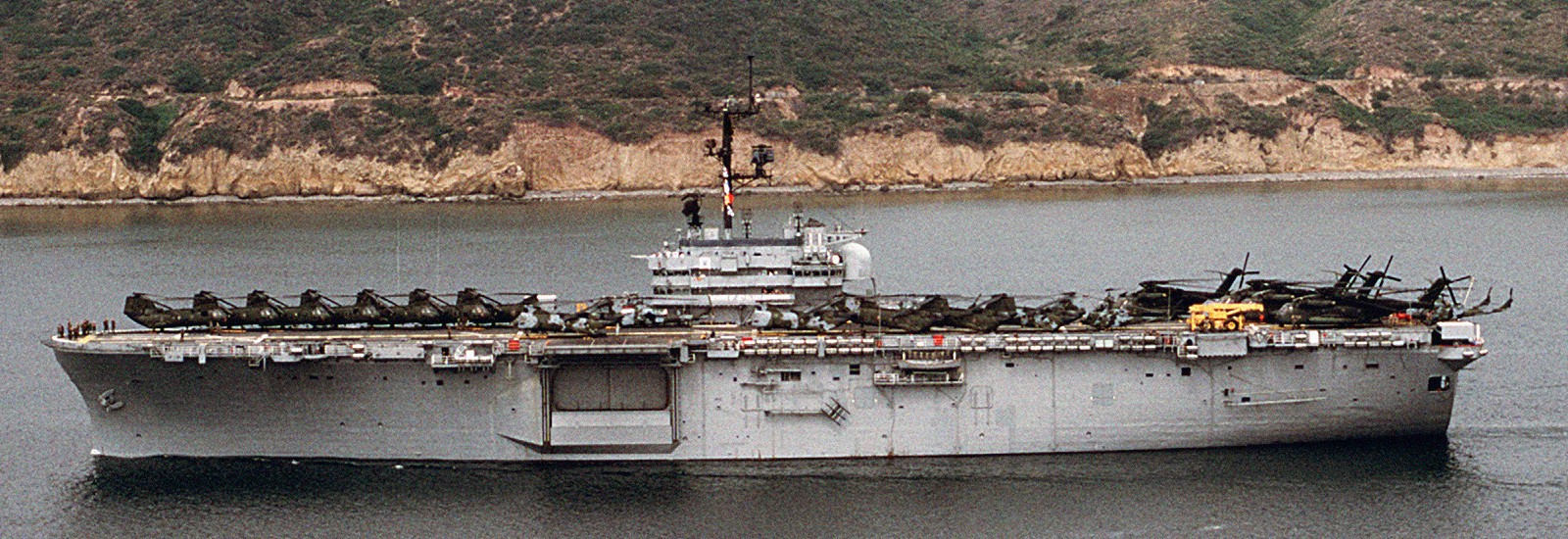 with HMM-268(C) embarked - departing Naval Base San Diego, California - June 1988 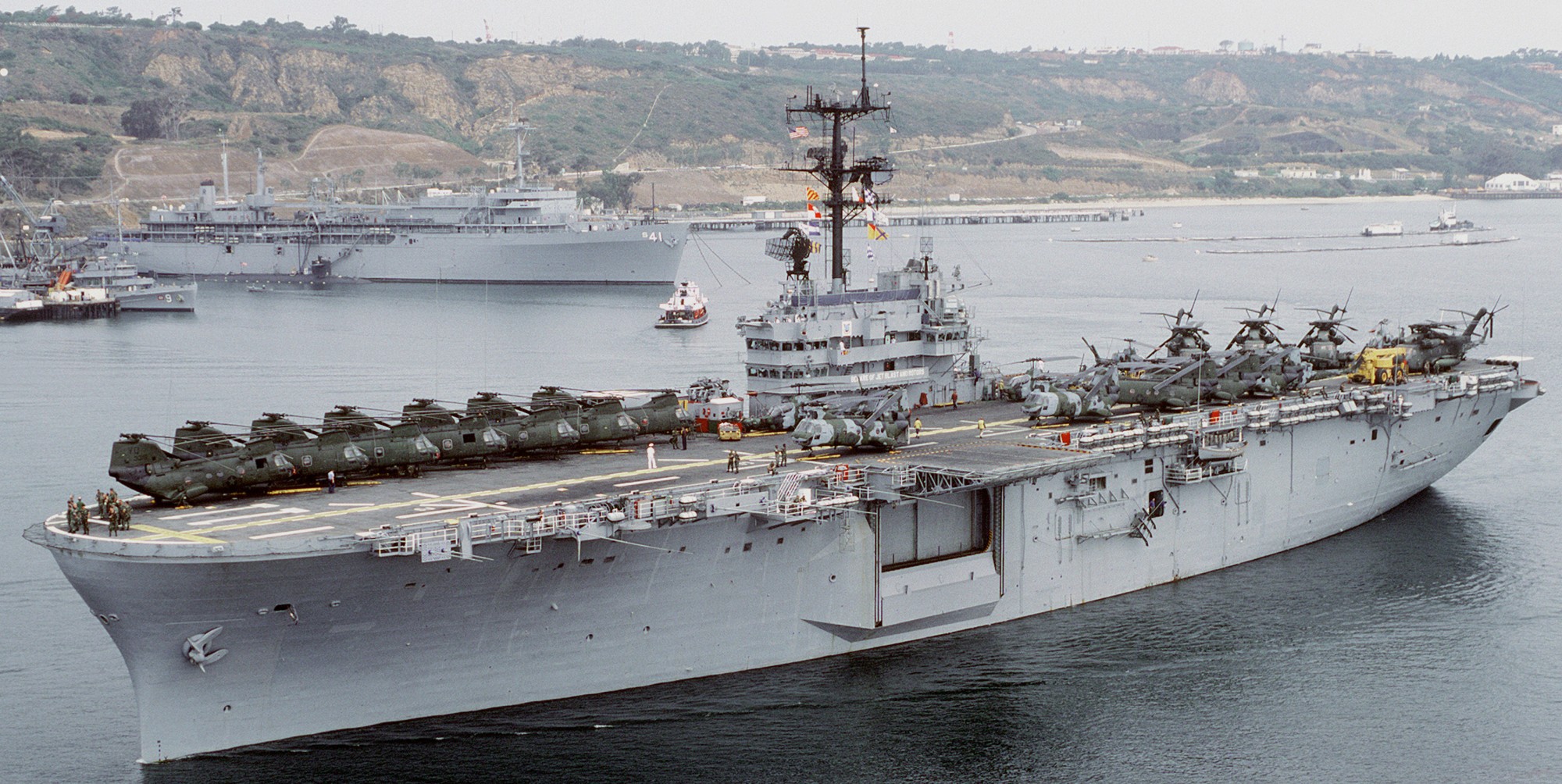 with HMM-268(C) embarked - departing Naval Base San Diego, California - June 1988 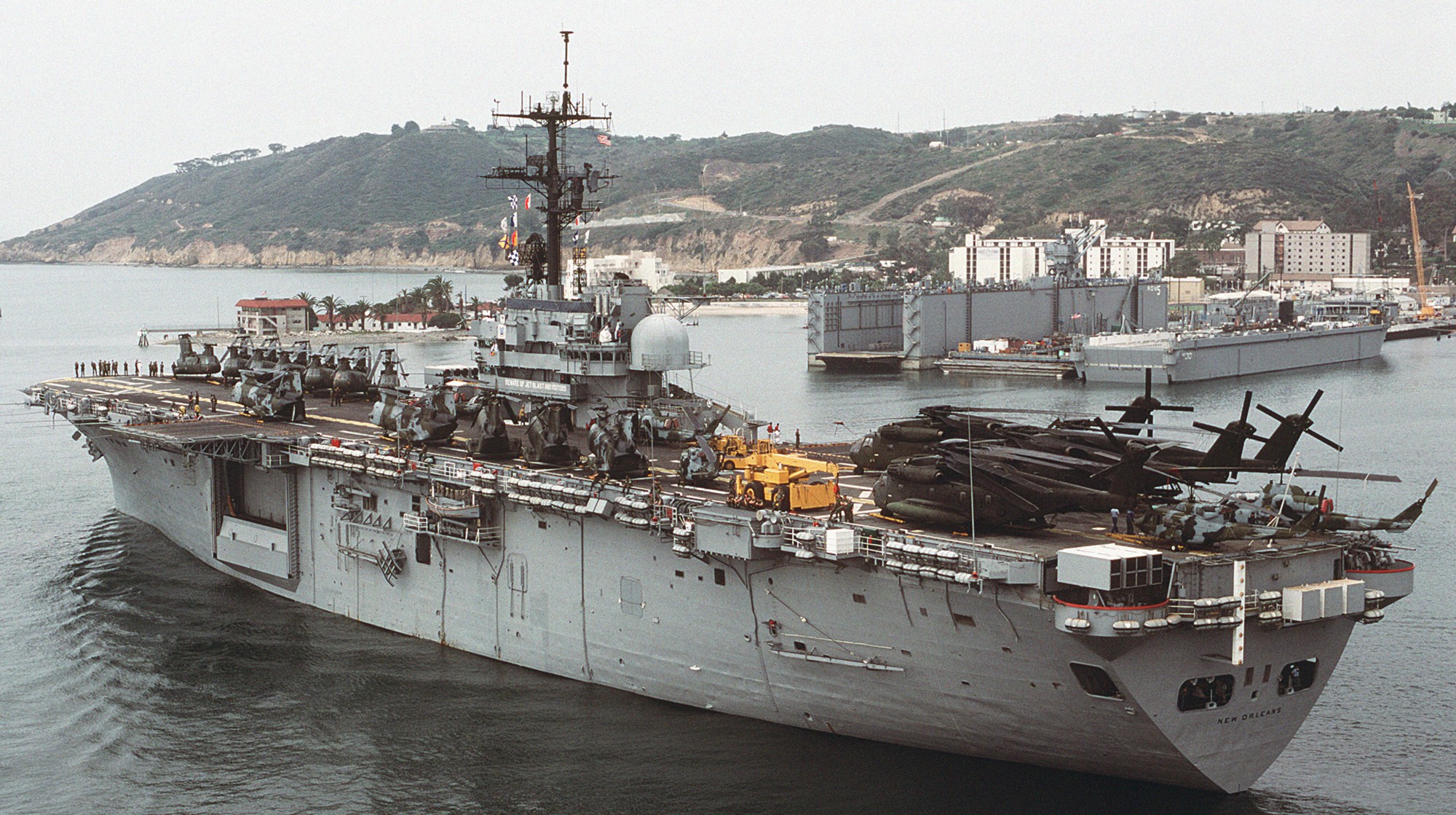 with HMM-268(C) embarked - departing Naval Base San Diego, California - June 1988 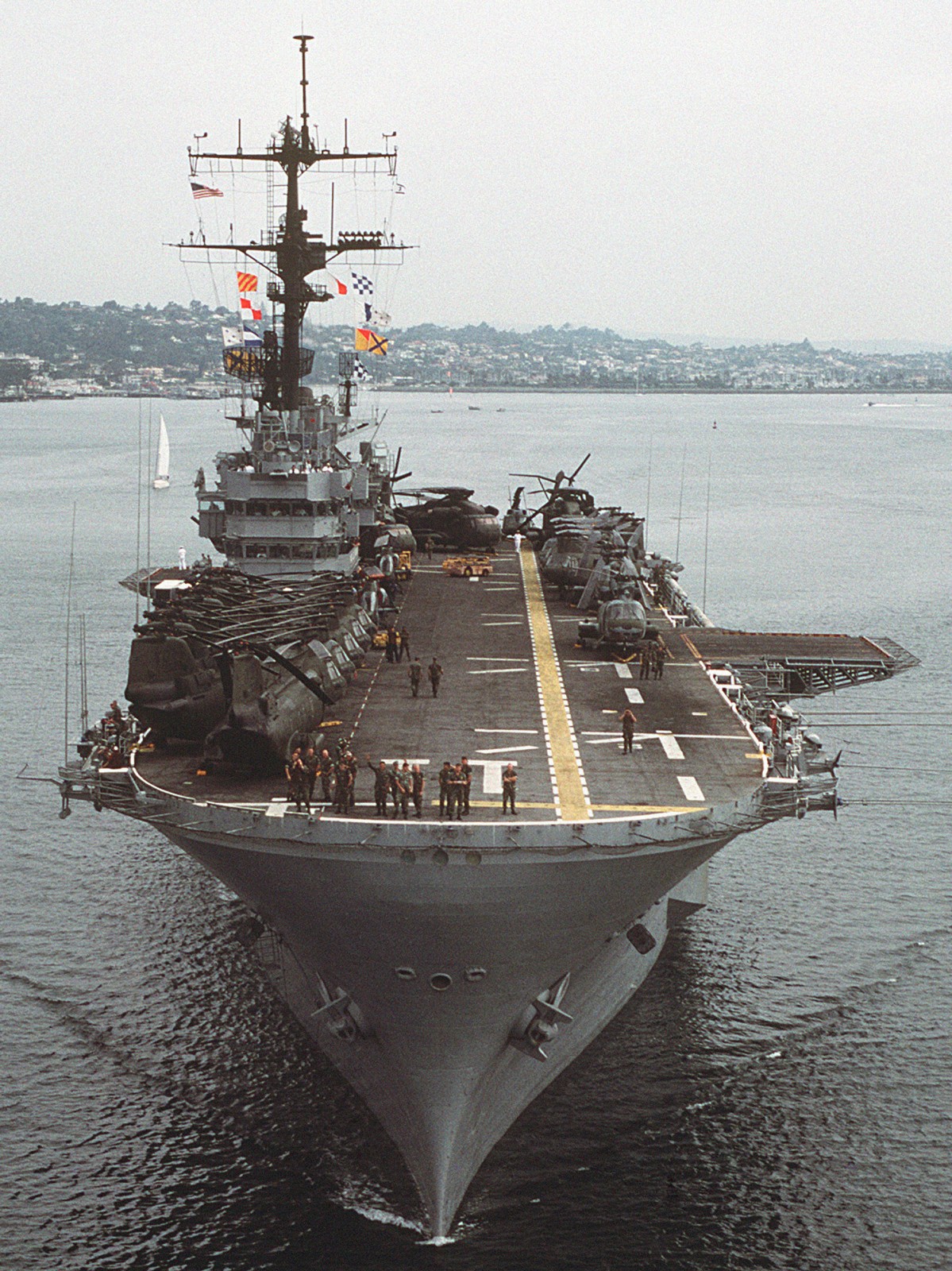 with HMM-268(C) embarked - departing Naval Base San Diego, California - June 1988 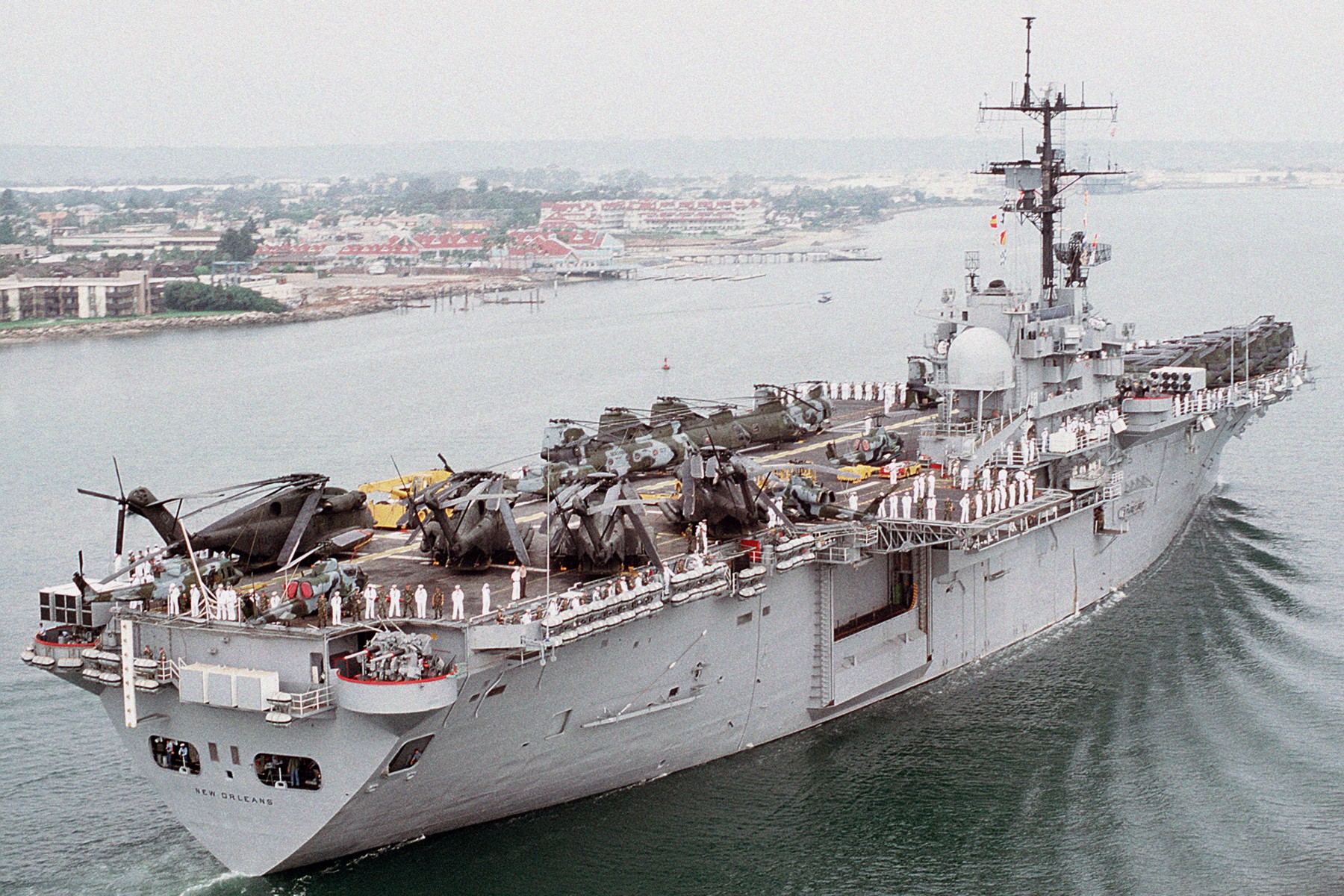 with HMM-268(C) embarked - departing Naval Base San Diego, California - June 1988 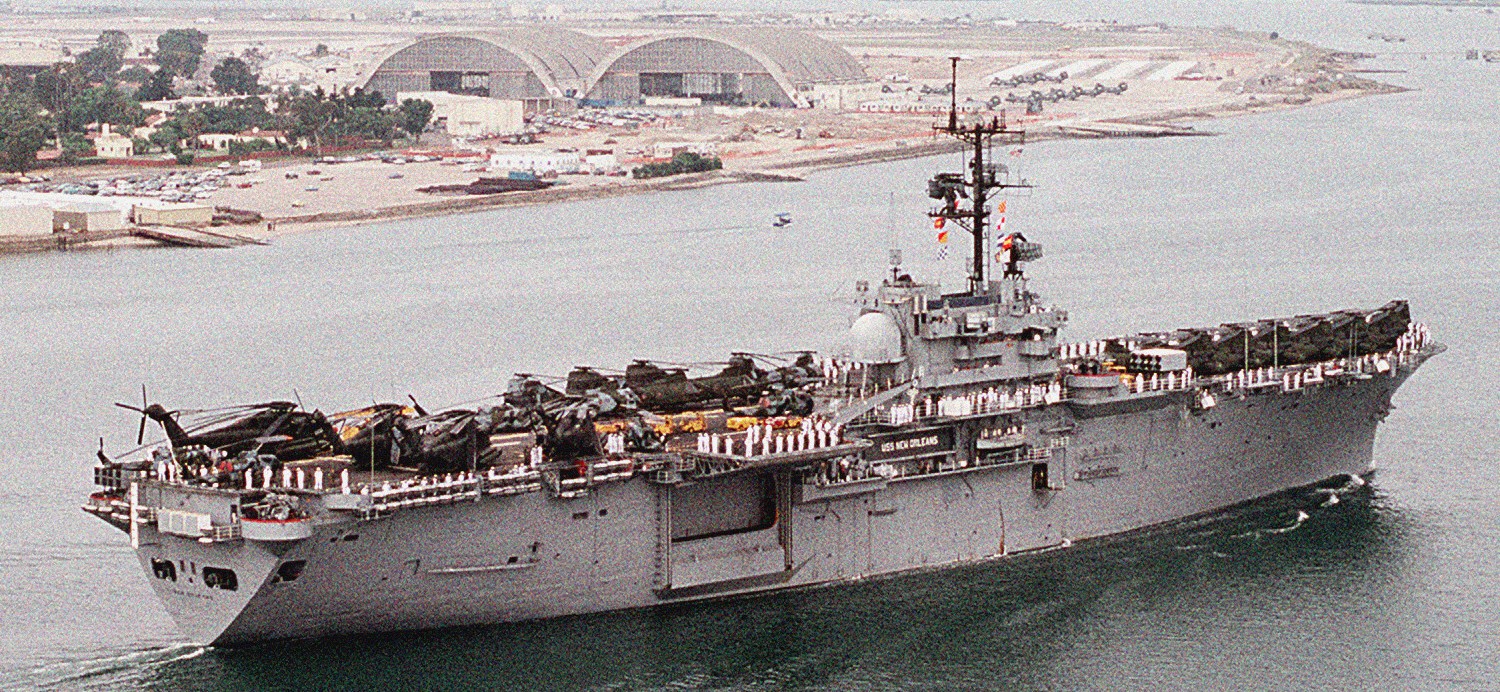 with HMM-268(C) embarked - departing Naval Base San Diego, California - June 1988 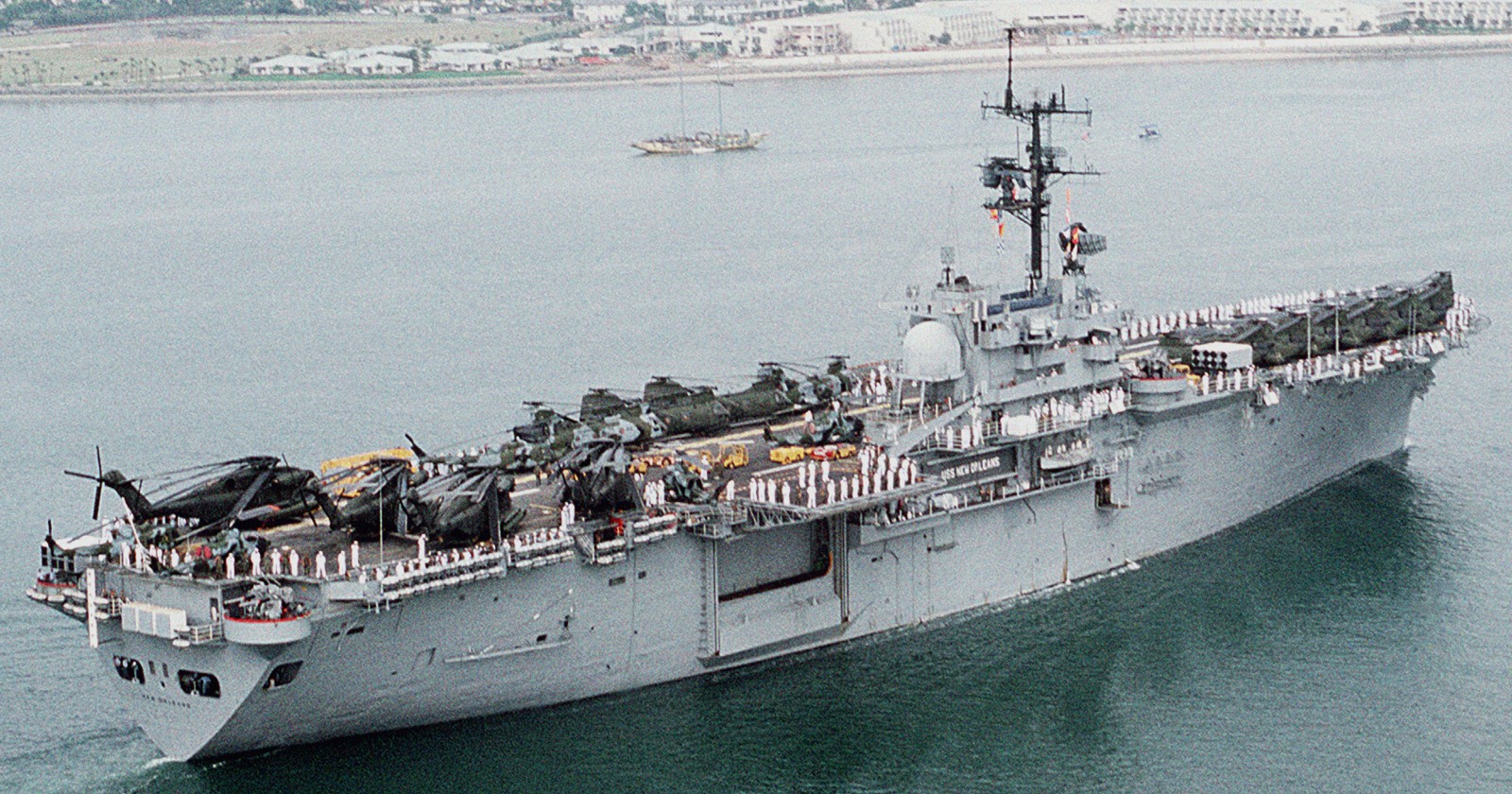 with HMM-268(C) embarked - departing Naval Base San Diego, California - June 1988 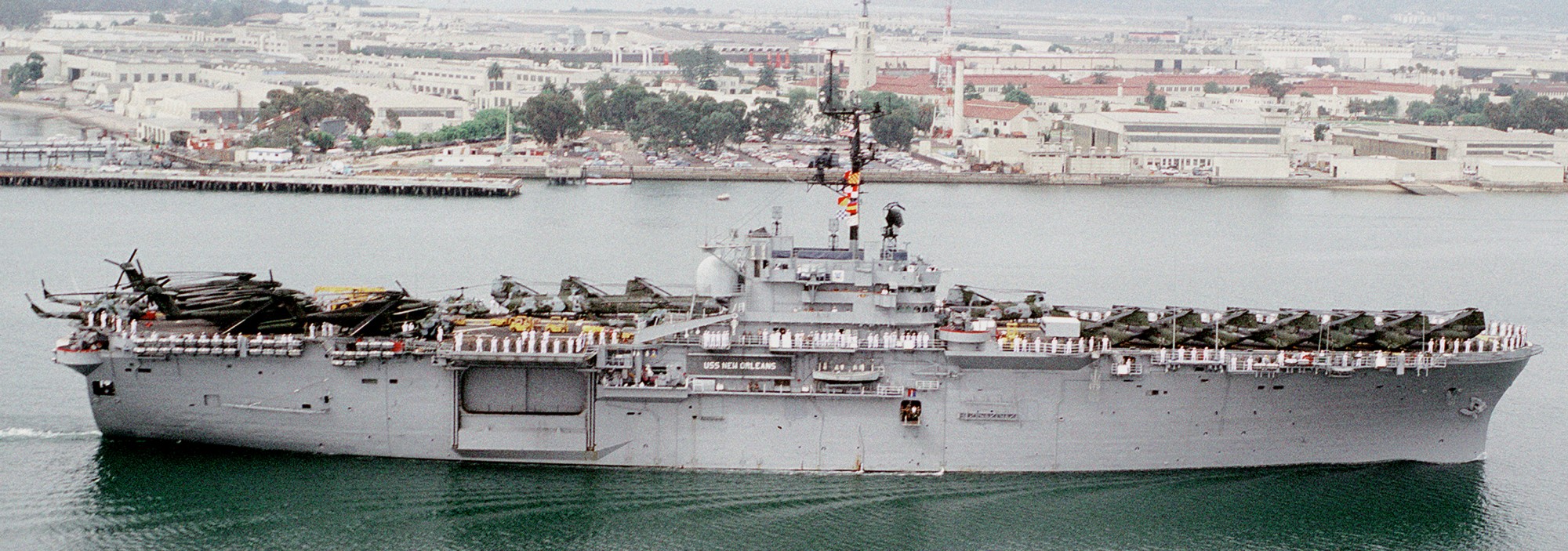 with HMM-268(C) embarked - departing Naval Base San Diego, California - June 1988 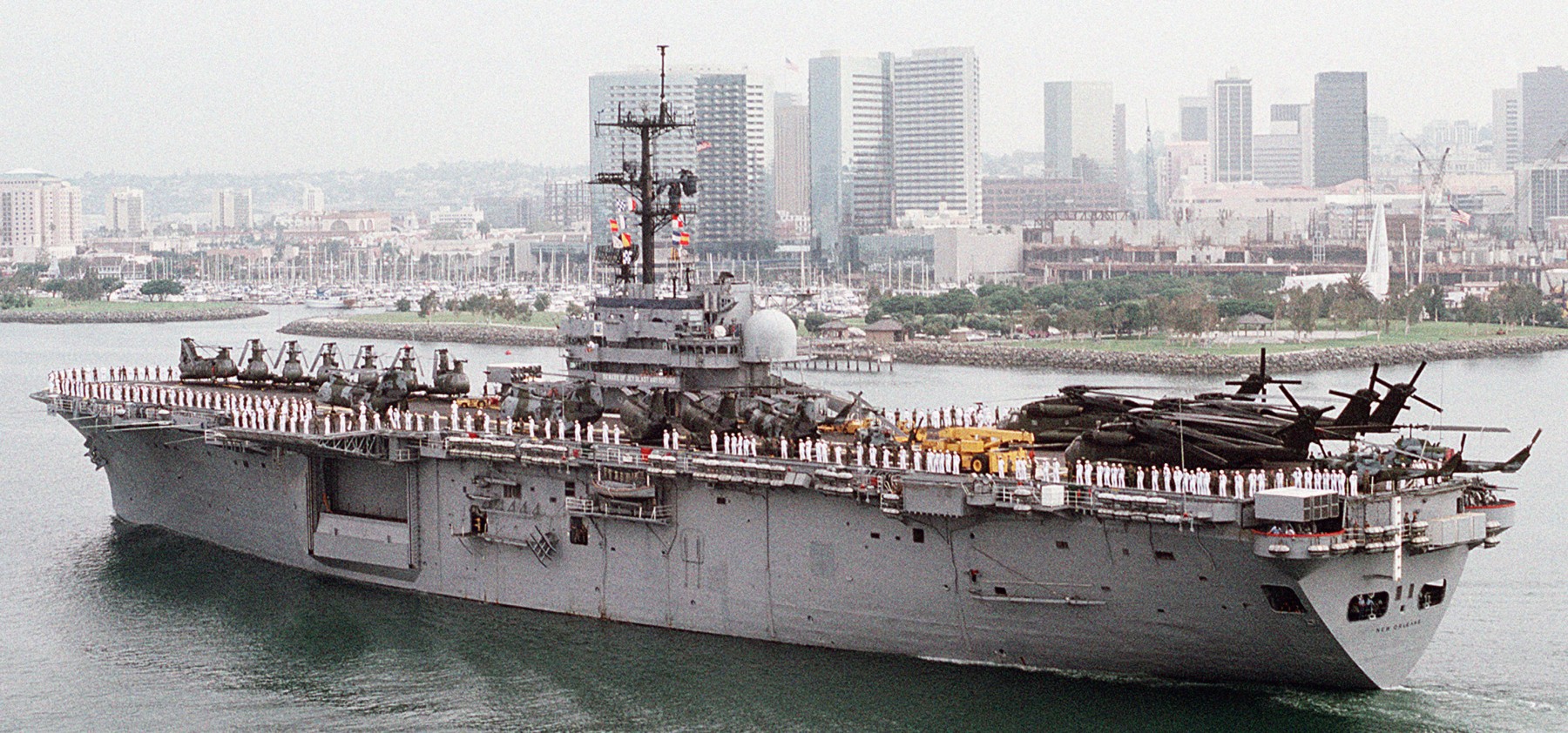 with HMM-268(C) embarked - departing Naval Base San Diego, California - June 1988 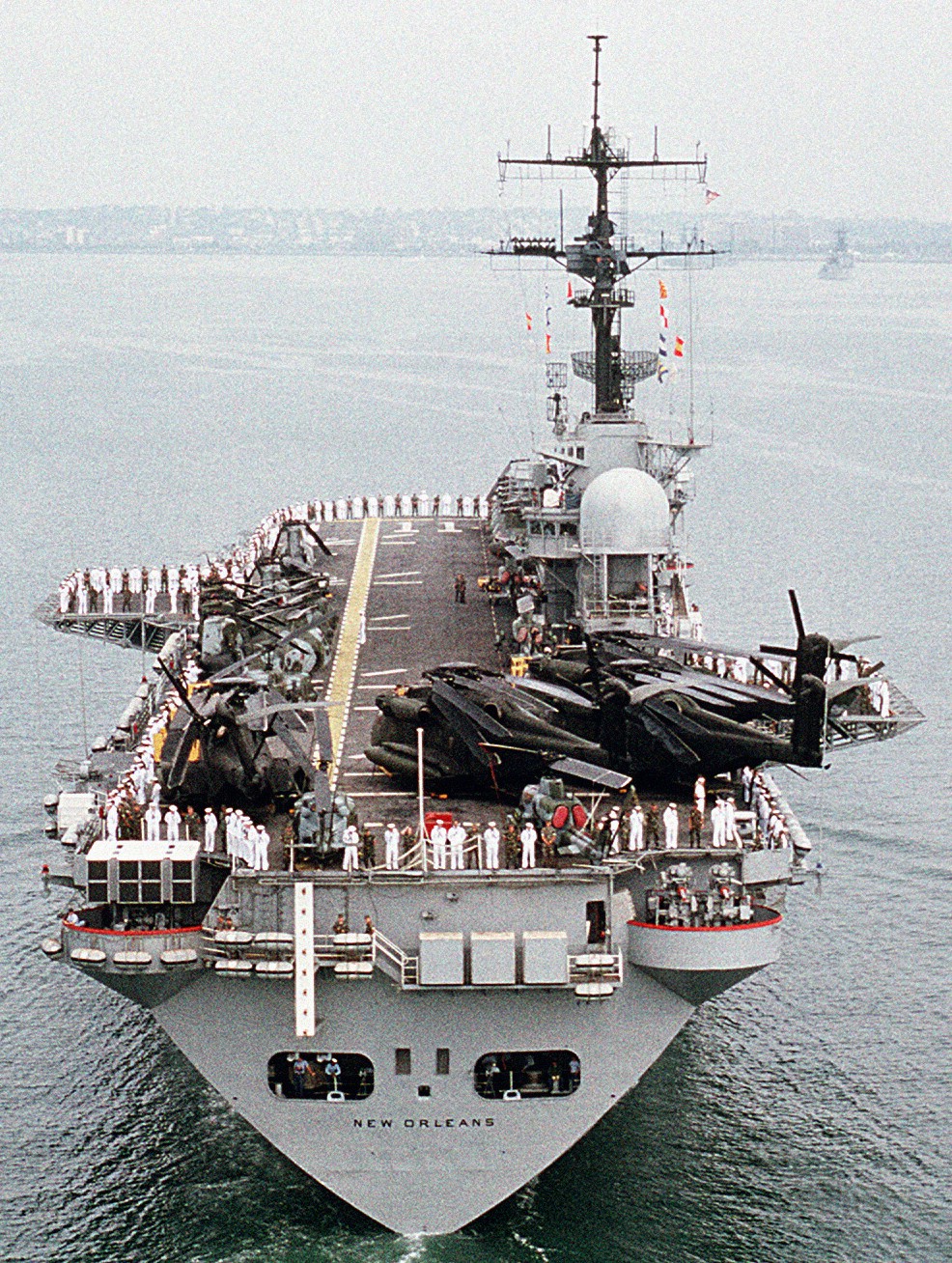 with HMM-268(C) embarked - departing Naval Base San Diego, California - June 1988 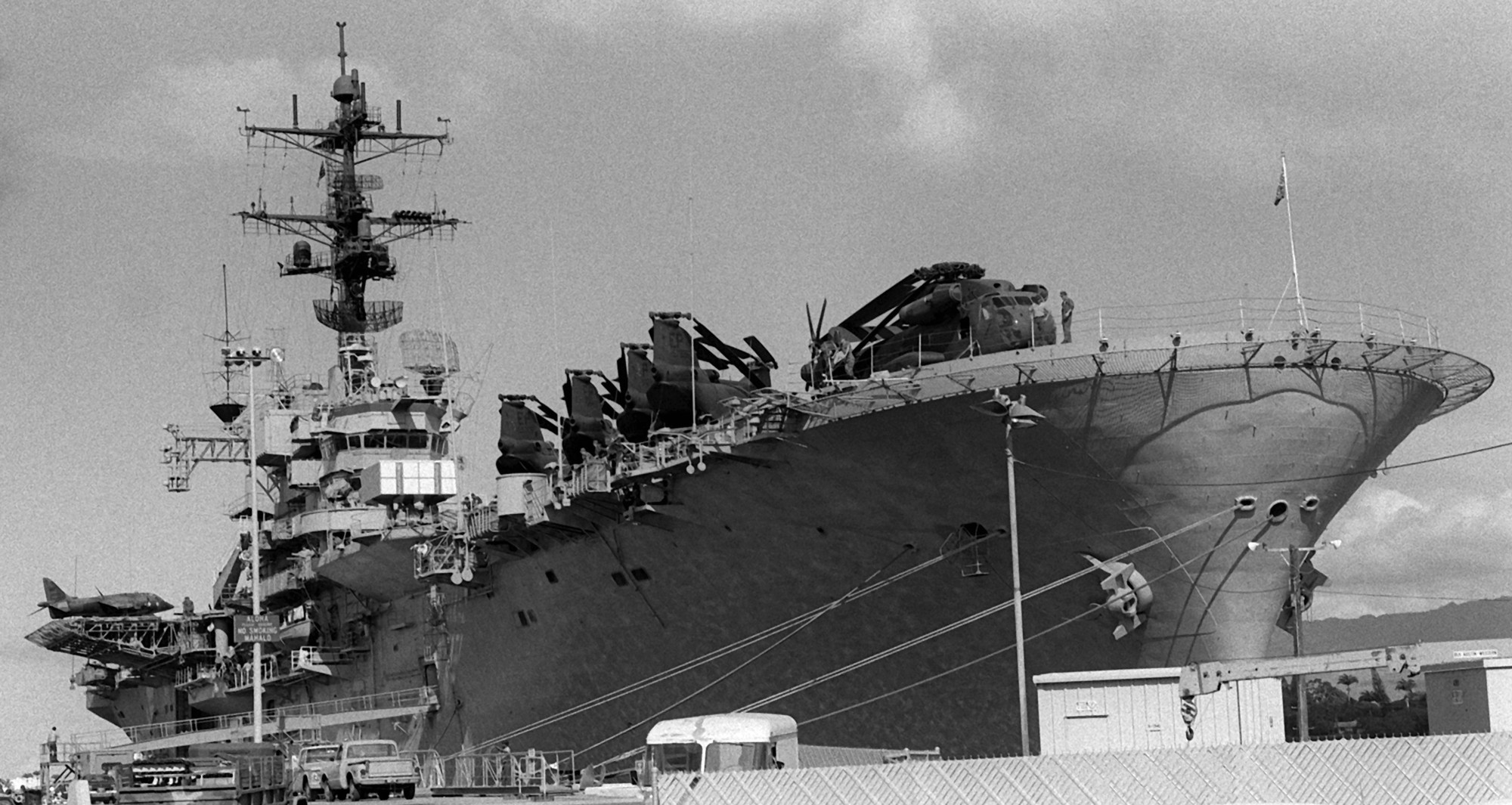 Pearl Harbor, Hawaii - April 1982 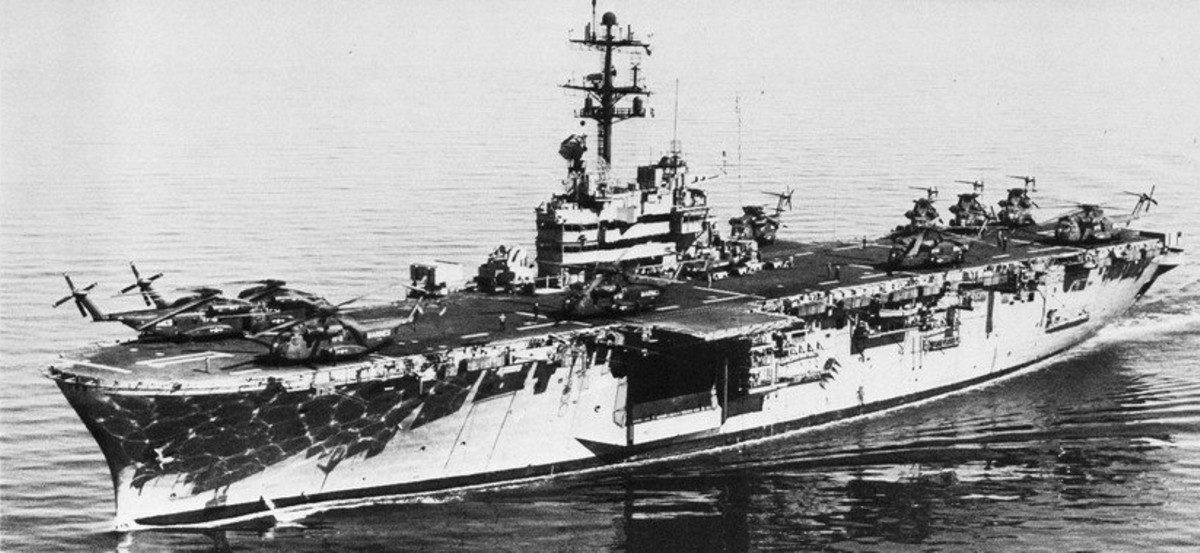 1974 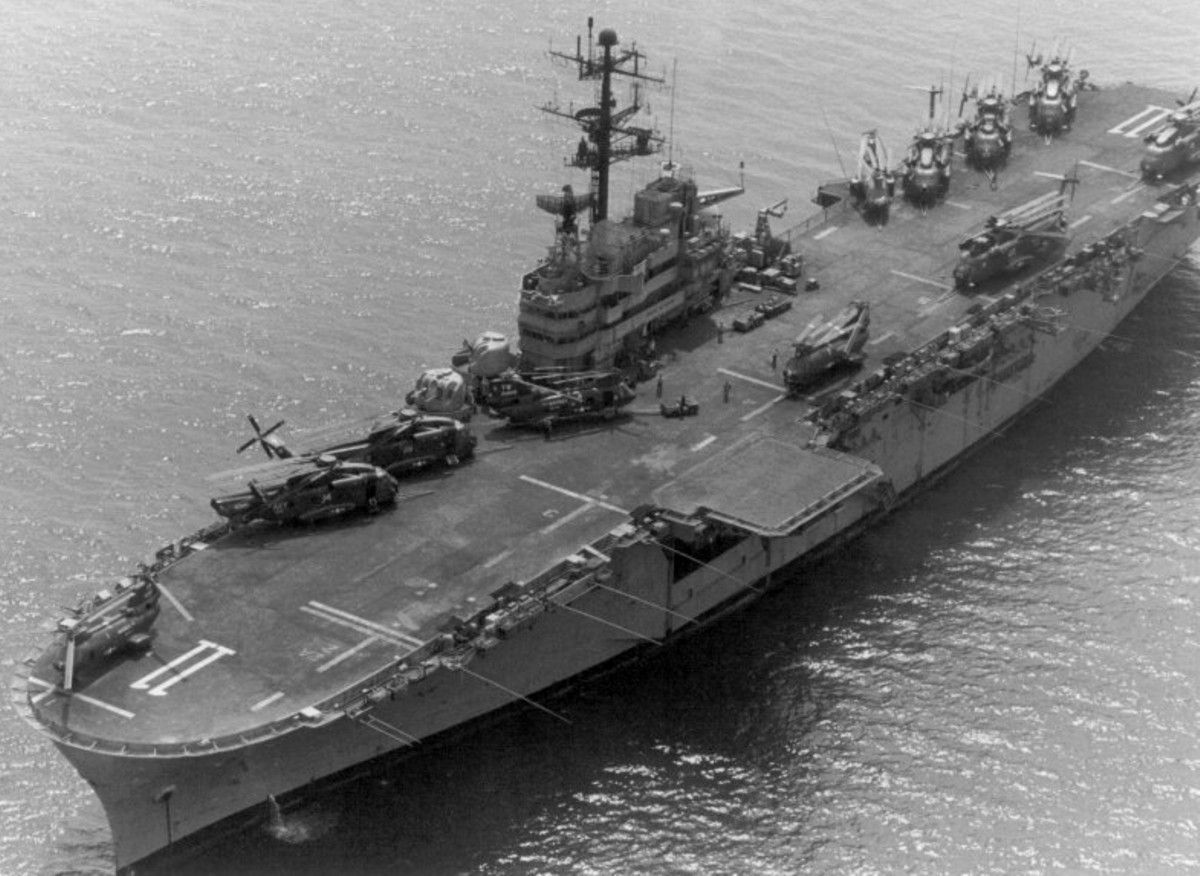 with HMM-165(C) embarked - Vietnam War - March 1973 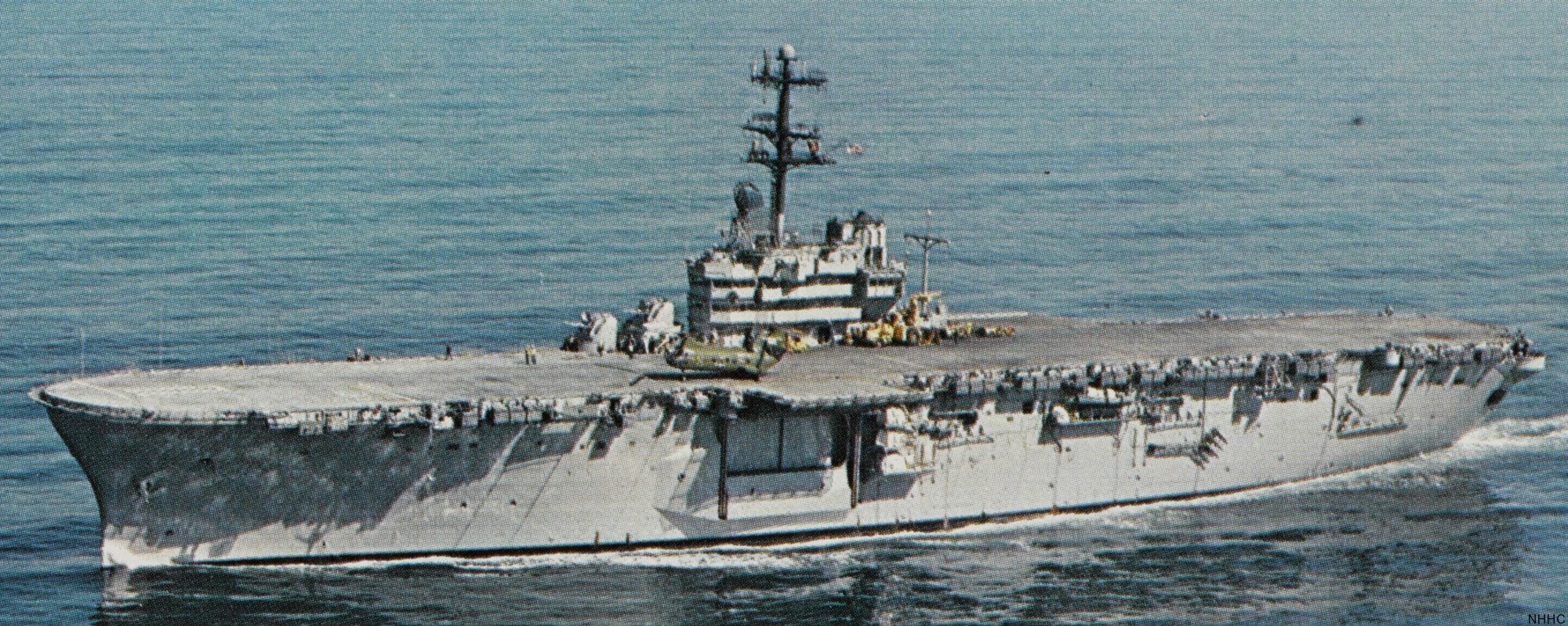 1973 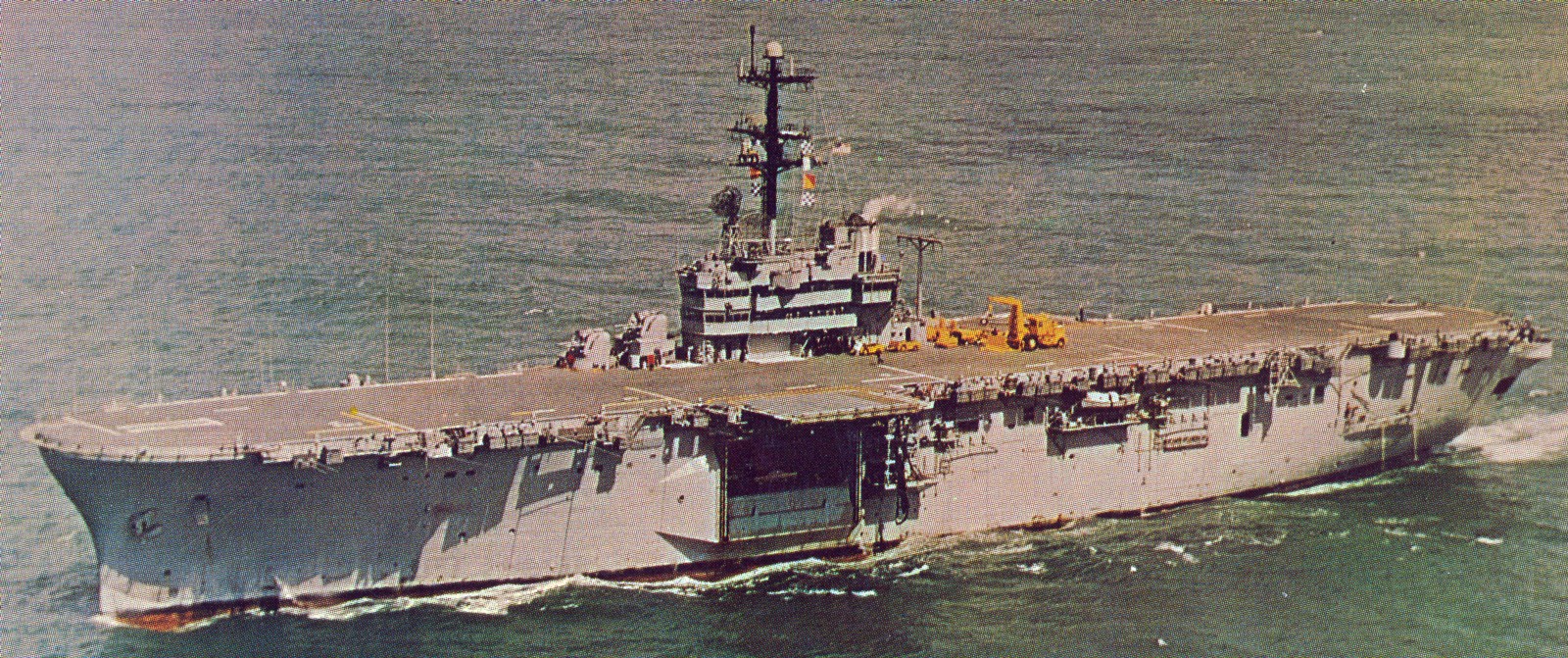 1971 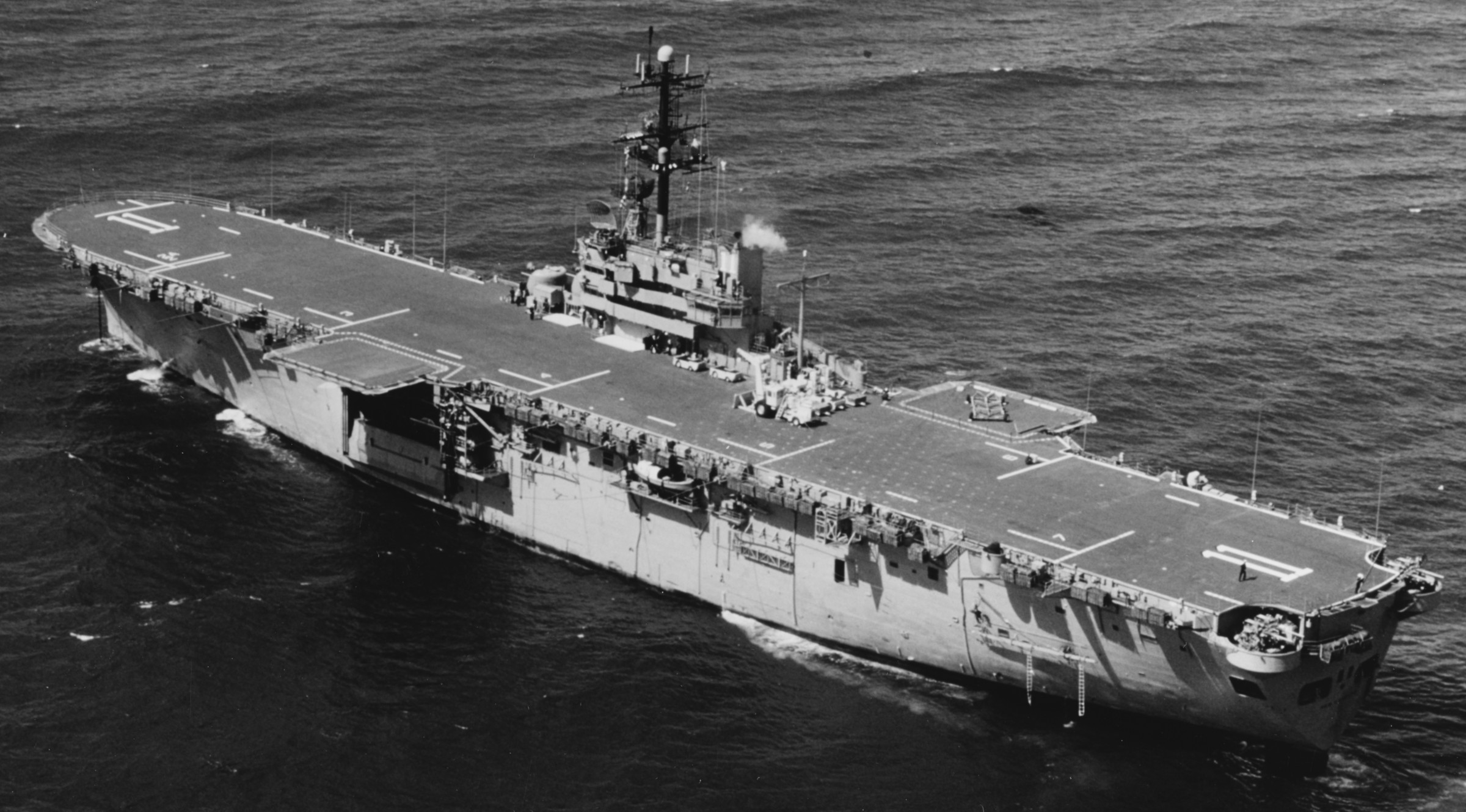 March 1969 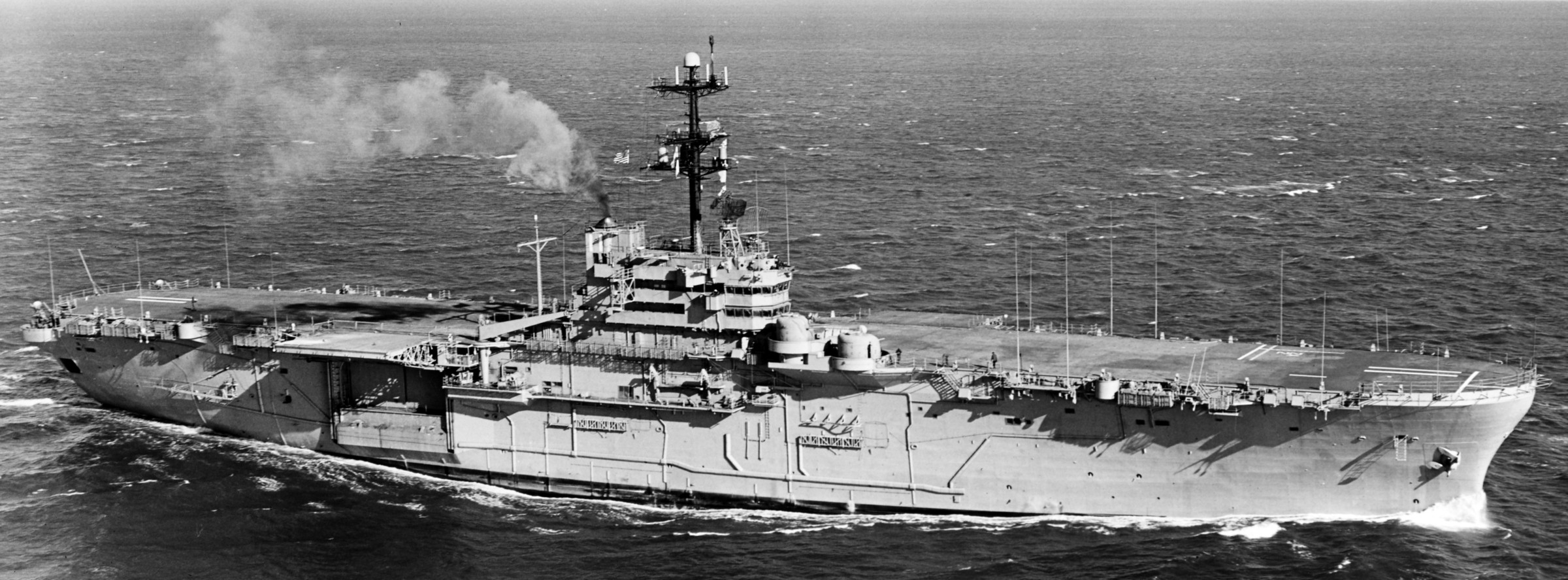 December 1968 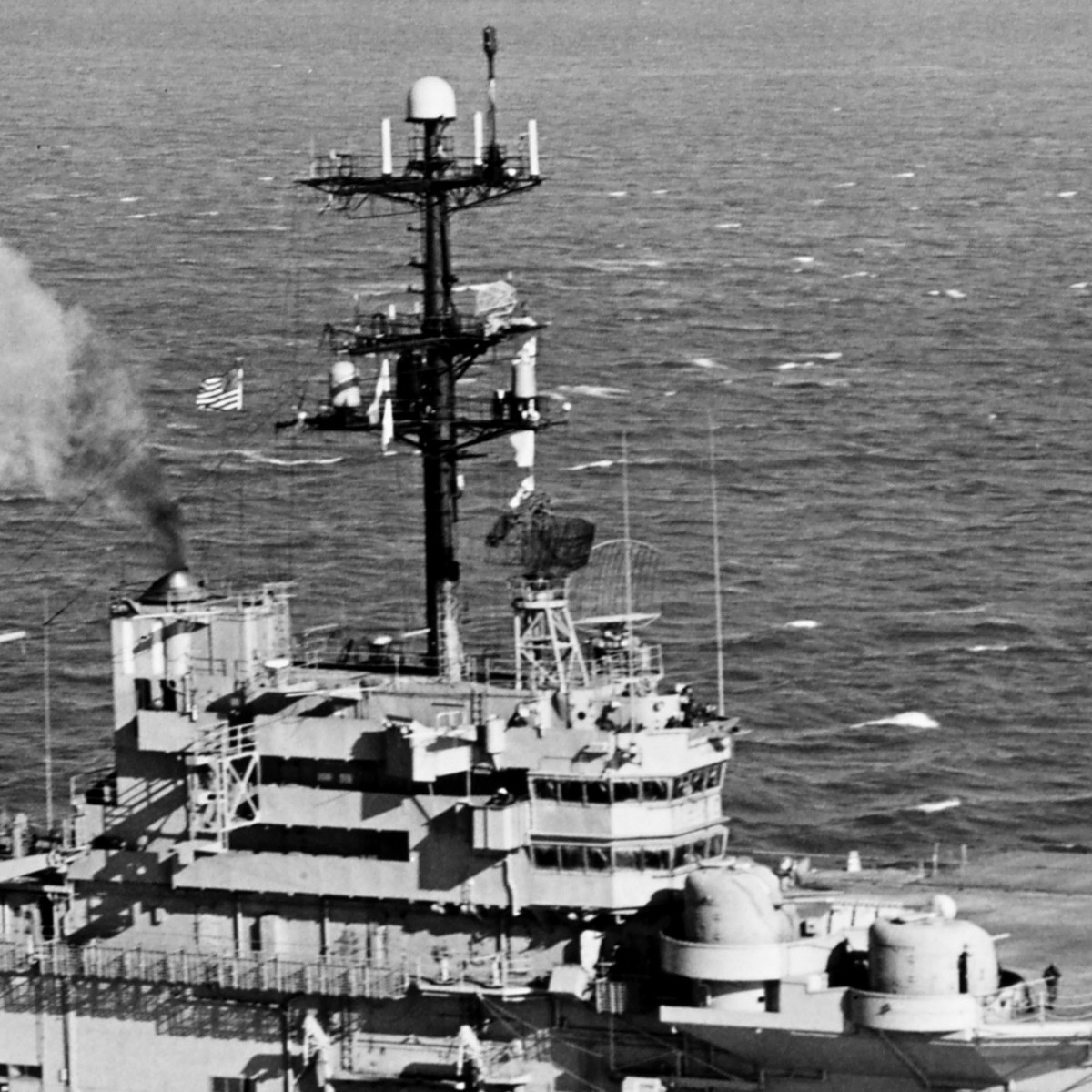 cutout |
||
|
USS New Orleans (LPH 11): USS New Orleans (LPH-11) was an Iwo Jima-class amphibious assault ship in the United States Navy. She was the third Navy ship to be so named, and is the first named for the Battle of New Orleans, which was the last major battle of the War of 1812. New Orleans was laid down on 1 March 1966 at the Philadelphia Naval Shipyard in Philadelphia, Pennsylvania. She was launched on 3 February 1968 and sponsored by Mrs. Arthur A. De la Houssaye. She was commissioned on 16 November 1968 with Captain G.M. Even in command. 1960s and 1970s: New Orleans made her first appearance in the Western Pacific in August 1969 as flagship for Amphibious Ready Group Bravo. Her embarked Marine helicopter squadron and battalion leading team were ready to be landed within hours. In October, she hosted the Eighth Vietnamese Awards. Later that month, she participated in Operation Keystone Cardinal, a retrograde movement of Marines out of South Vietnam. The ship's first deployment terminated in March 1970. After having participated in five amphibious exercises, conducted many weeks of Amphibious Ready Group (ARG) maneuvers in the South China Sea, and visiting such ports as Hong Kong, Manila, Subic Bay, Okinawa, and Taipei, New Orleans returned to San Diego. Two other interesting assignments were given to New Orleans prior to her next Western Pacific deployment. In August 1970, she became flagship for Commander First Fleet and provided support for president Richard Nixon's visit to Puerto Vallarta, Mexico, and made a port call to Acapulco. Then, in late 1970, she prepared for the recovery of Apollo 14. On 9 February 1971, she picked up astronauts Alan Shepard, Stuart Roosa, and Edgar Mitchell some 900 miles (1,450 km) south of American Samoa. In May 1971, New Orleans made her second Western Pacific appearance, conducting various contingency exercises, a multi-national cruising exercise simulating a convoy under combat conditions, and a simulated assault with the Marines on the island of Mindoro, Republic of the Philippines. This deployment was completed in November of that same year. Following a rather extensive yard period, New Orleans began her next Western Pacific deployment on 17 July 1972 under the command of Captain R.W. Carius. She became flagship for Amphibious Squadron Three and later Amphibious Ready Group Alfa under Commodore W.H. Ellis. During late July and early August, New Orleans and her embarked units participated in the Philippine flood relief operations, earning the Philippine Presidential Unit Citation. The helicopter carrier became engaged in contingency operations again with the ready group off the coast of Vietnam until early February 1973, at which time she became the flagship for Commander Task Force 78 and the control ship for Operation End Sweep. CTF 78, headed by Rear Admiral Brian McCauley, was tasked with de-mining operations for the coast and harbors of North Vietnam. She ceased operations in Haiphong Harbor on 17 April 1973. New Orleans next participated in recovery operations for the Skylab 3 mission (28 September 1973) and Skylab 4 mission (8 February 1974). She was also present for the recovery of astronauts Thomas Stafford, Deke Slayton, and Vance Brand during the joint American-Soviet Apollo-Soyuz mission of 24 July 1975. 1980s: In 1980, the ship deployed and spent several months in the Indian Ocean during the Iran hostage crisis. She completed a major overhaul at Puget Sound Naval Shipyard in 1981. Deployments and exercises in 1982 and 1983 included RIMPAC '82, Exercise Kernel Usher '83-1, Operation Team Spirit 83, and WESTPAC '83. From May to December 1984, New Orleans sailed the Indian Ocean and Western Pacific, participating in eight major amphibious operations. These included Operation Beach Guard, Operation Cobra Gold & Operation Valiant Usher and was honored as the first US ship to land troops ashore at the island of Iwo Jima since WWII as well as troops at Inchon, Korea since the Korean War. While on WESTPAC in 1986, she served in an alert status off the Philippine coast during that country's national elections. She also served as the medical and communications support ship for president Ronald Reagan's trip to Bali, Indonesia. Upon her return to home port, New Orleans participated in two major exercises leading to her thirteenth deployment to the Western Pacific. During this time, she participated in four amphibious exercises, including Cobra Gold '88, Valiant Usher '89-1, and Valiant Blitz '89-1. The ship called on the port of Perth, Australia, during that country's bicentennial. In 1989, she made port visits to Mazatlán (Mexico) and Seattle, Washington, for the Seattle Sea Fair. She also conducted a humanitarian relief effort in Cabo San Lucas (Mexico). 1990s: Following completion of a phased maintenance availability in January 1990, New Orleans sailed the Western Pacific, Indian Ocean, and Persian Gulf in support of Operations Desert Storm, Desert Saber and Desert Shield from 1 December 1990 to 28 August 1991. She served as a member of CTG-36/CTF-156, the largest amphibious task force to deploy from the West Coast of the United States in 25 years. Significant accomplishments included the off-load of 1,700 Marine combat troops on G-Day and aviation mine countermeasures in the North Persian Gulf, ten nautical miles (19 km) off the coast of Kuwait. In November 1991, New Orleans returned to San Diego for a six-month overhaul. In October 1992, she hosted festivities at Fleet Week '92 in San Francisco. After returning to San Diego, she was the first LPH to go through Afloat Training Group Pacific's "Tailored Ship's Training Availability" and was instrumental in developing a training track for LPH-class ships. In September 1993, New Orleans deployed on her fifteenth WESTPAC cruise where she participated in Exercise Valiant Usher '93 and was a member of the Amphibious Ready Group that conducted operations in support of Operation Restore Hope at Mogadishu, Somalia. New Orleans became part of Naval Battle Force, Somalia, under Rear Admiral Arthur K. Cebrowski, in October–November 1993. Other elements of the force included USS America, USS Simpson, USS Cayuga (LST-1186), USS Denver (LPD 9), USS Comstock (LSD 45), and the 13th Marine Expeditionary Unit. New Orleans received the Armed Forces Expeditionary Medal and a Meritorious Unit Commendation for Somalia related operations from 18 October 1993 to 1 February 1994. New Orleans next sailed onto the movie screen in November 1994 when astronaut Captain Jim Lovell, USN, director Ron Howard, and actors Tom Hanks, Kevin Bacon, and Bill Paxton came aboard to film several portions of the Oscar-winning film Apollo 13. She portrayed the then-decommissioned USS Iwo Jima, one of her sister ships. June 1995 saw New Orleans underway again for WESTPAC operations. She was present to support the Marine raid on the Al Hamra Facility on 24 October of that year. She returned to San Diego on 22 December 1995, after embarking 198 Sea Scouts as part of a "Tiger Cruise" during the last leg of her journey from Pearl Harbor to San Diego. The ship got underway again on 31 January 1997, for another WESTPAC cruise which included boarding the Marines from the 31st MEU(SOC) based out of Okinawa, Japan and participating in Operation Tandem Thrust '97 in Townsville, Australia in which it weathered Cyclone Justin before returning to port on 2 May. Fate: New Orleans was decommissioned and placed in reserve in San Diego, California, in October 1997. She was the recipient of the Navy Unit Commendation, four Battle Efficiency Awards, the Meritorious Unit Commendation, the Navy Expeditionary Medal, the Armed Forces Expeditionary Medal, the Southwest Asia Campaign Medal, the Vietnam Service Medal, and the Kuwait Liberation Medal. She was mothballed in Suisun Bay, California at 38° 4'37.86"N, 122° 5'24.66"W from 1997 until 2006 while a group tried to save her as a museum in Long Beach, California. In 2006, the ship was relocated to Pearl Harbor to be prepared for a 'SINKEX'. In February 2008, New Orleans was listed for scrapping, instead of sinking, however, as of June 2010, New Orleans was once again scheduled to be sunk. Finally, New Orleans was sunk on 10 July 2010 during the RIMPAC 2010 exercise. The ship first sustained direct hits by at least seven Harpoon missiles. After the Harpoon strikes, B-52s from 2d Bomb Wing and 5th Bomb Wing dropped five 2000-pound GBU-10 precision bombs. As the ship began to list, a joint force of the five participating nations - United States, Japan, Australia, Canada and France - struck the ship with the majority hitting above the water line. The most damage came from the Australian HMAS Warramunga (FFH 152) who hit with three of the seven Harpoon and over 70 five-inch shells. New Orleans rolled on her side and sank at about 6:15 pm 70 miles north-west of Kauai. source: wikipedia |
||
|
The Battle of New Orleans ... was fought on January 8, 1815 between the British Army under Major General Sir Edward Pakenham and the United States Army under Brevet Major General Andrew Jackson, roughly 5 miles (8 km) southeast of the French Quarter of New Orleans, in the current suburb of Chalmette, Louisiana. The battle was the climax of the five month Gulf Campaign (September 1814 to February 1815) by Britain to try to take New Orleans, West Florida, and possibly Louisiana Territory which began at the First Battle of Fort Bowyer. Britain started the New Orleans campaign on December 14, 1814, at the Battle of Lake Borgne and numerous skirmishes and artillery duels happened in the weeks leading up to the final battle. The battle took place 18 days after the signing of the Treaty of Ghent, which formally ended the War of 1812, on December 24, 1814, though it would not be ratified by the United States (and therefore did not take effect) until February 16, 1815, as news of the agreement had not yet reached the United States from Europe. Despite a large British advantage in numbers, training, and experience, the American forces defeated a poorly executed assault in slightly more than 30 minutes. The Americans suffered roughly 70 casualties, while the British suffered roughly 2,000, including the deaths of the commanding general, Major General Sir Edward Pakenham, and his second-in-command, Major General Samuel Gibbs. |
||
| patches + more | ||
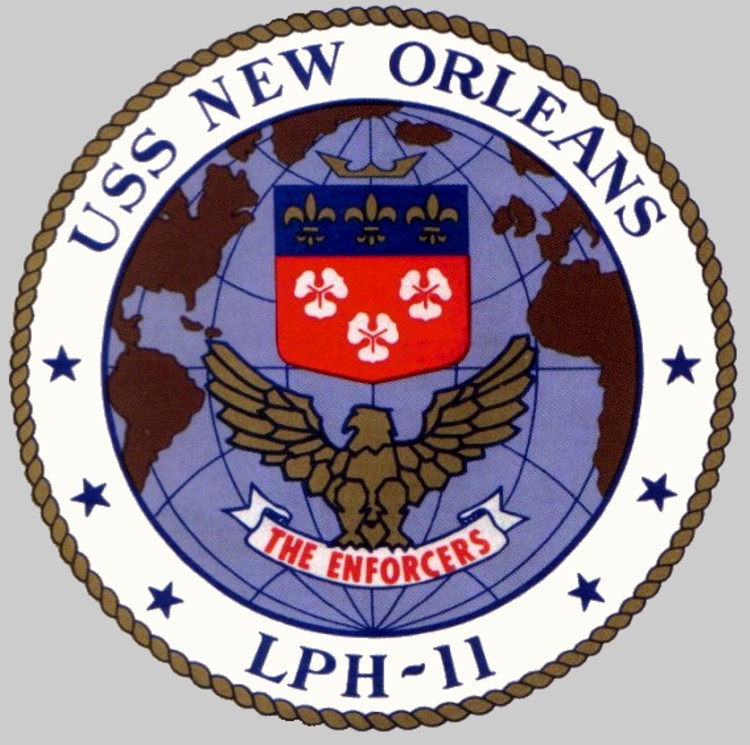 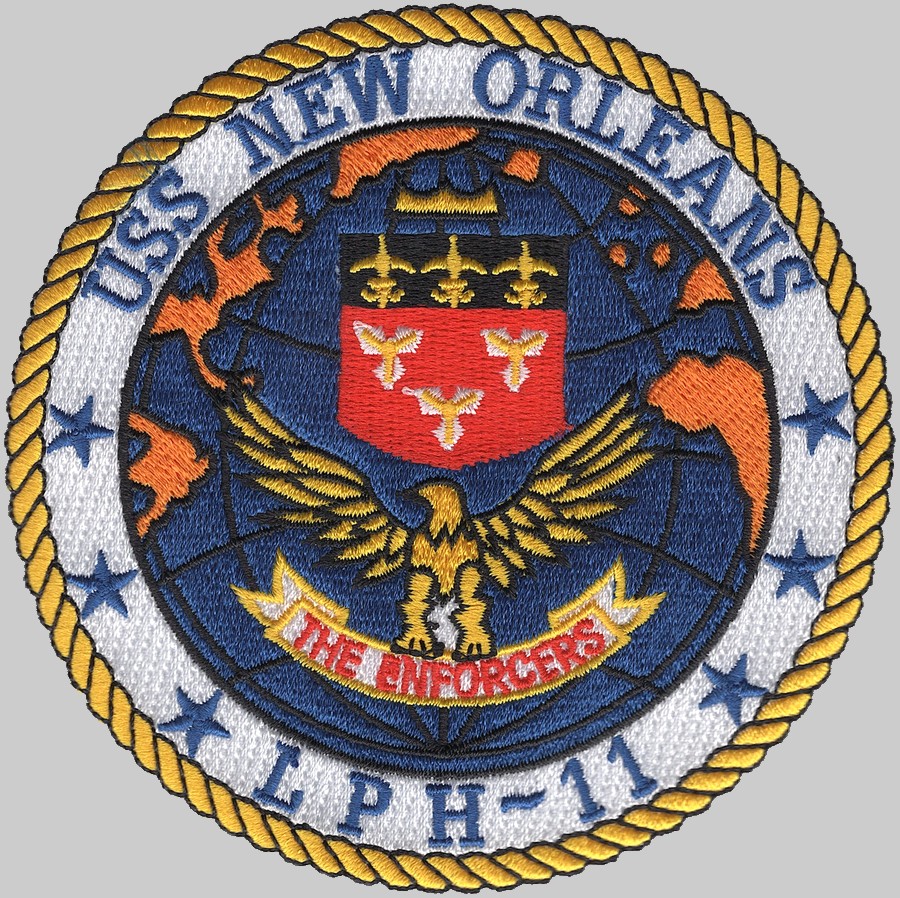 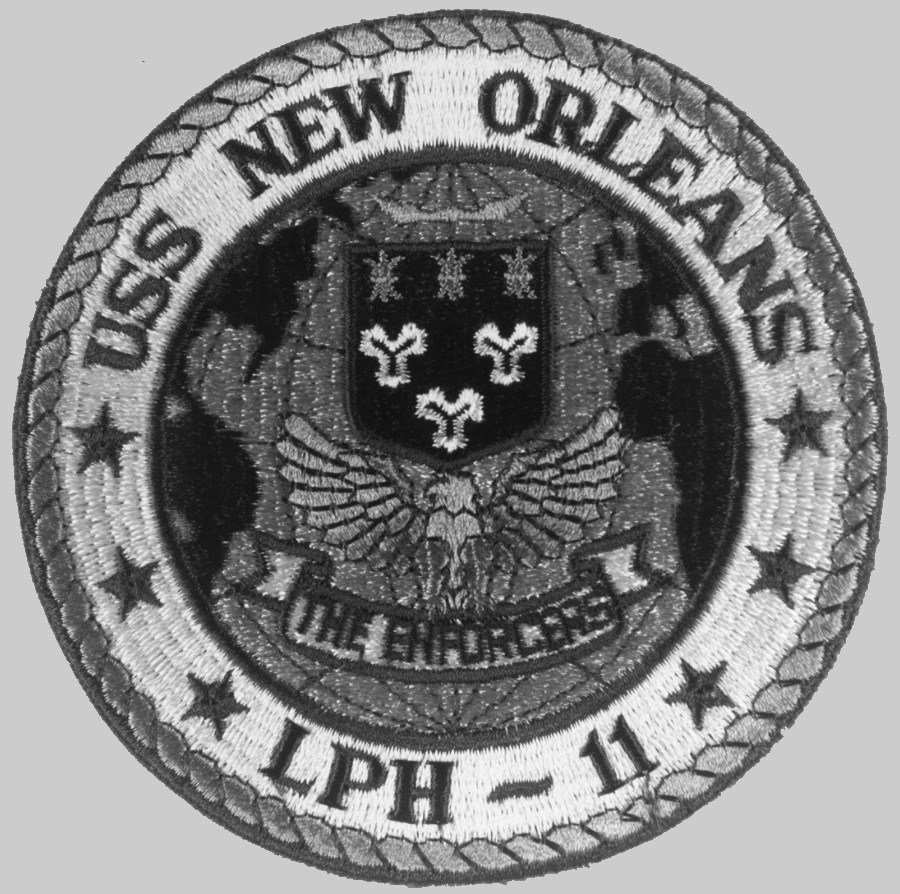 |
||
|
|
seaforces.org |
USN ships
start page | |